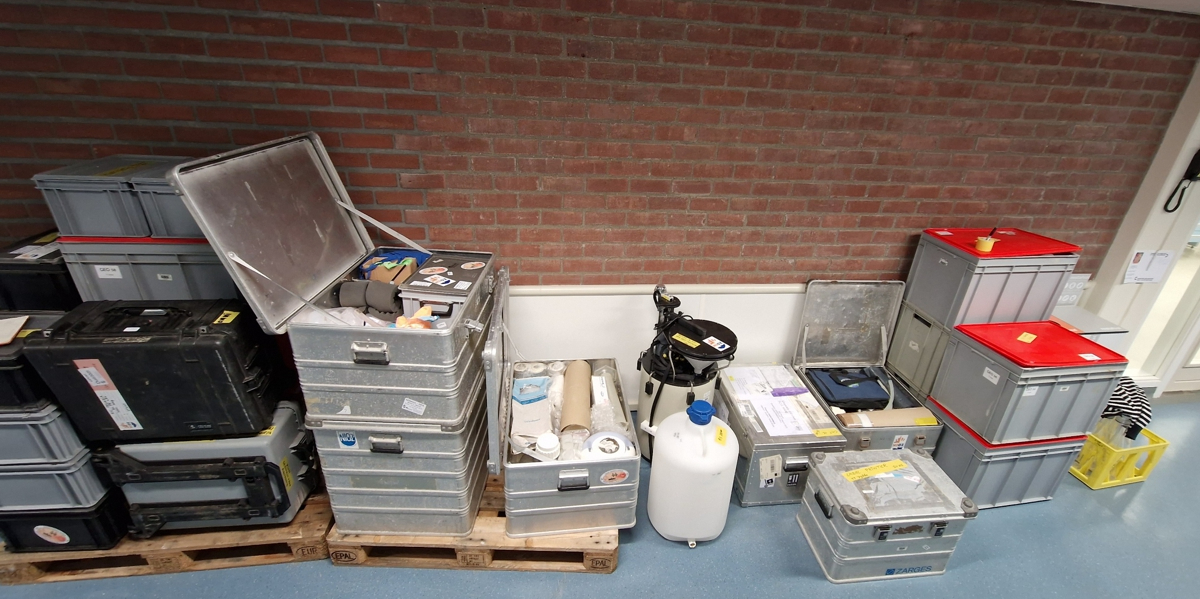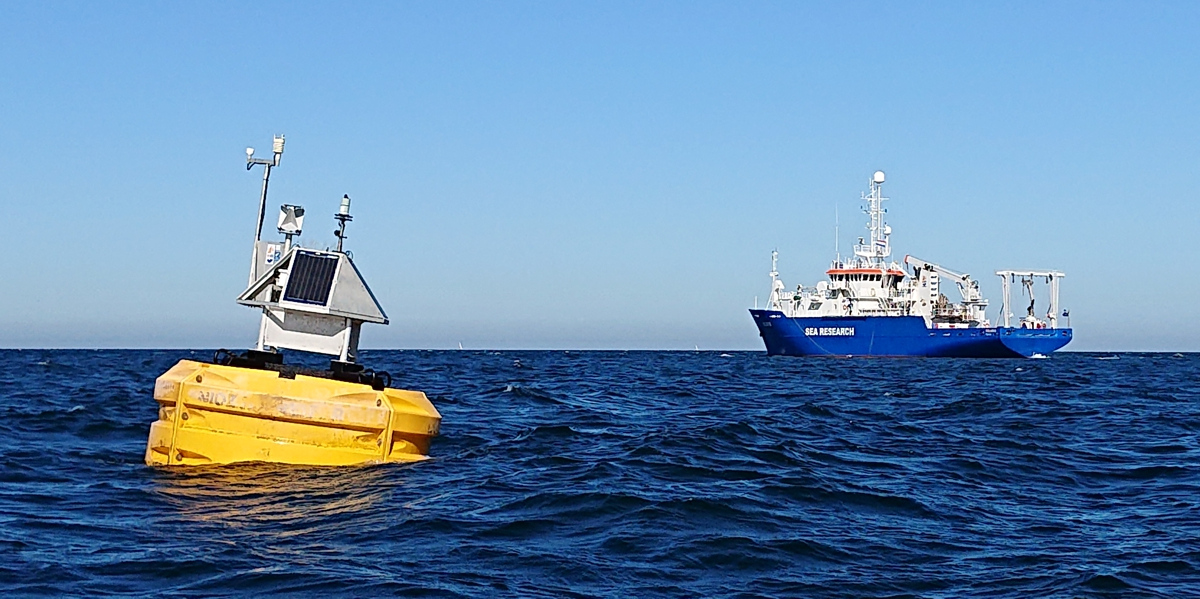
Twelve scientists from five different institutes will board RV Pelagia in the port of Mindelo on the Cape Verde Island of Sao Vicente early March 2023 for a three-week expedition. Below you can see the planned cruise track of expedition 64PE514, which will take us along the sediment-trap stations M1 (~12°N/23°W), CBi (~21°W/19°W) and CB (~21°W/21°N). Next to a set of submarine instruments collecting material settling through the water column, stations M1 and CB also have a dust-collecting buoy floating at the ocean's surface. Buoy Laura is still sampling at station M1, buoy Carmen "escaped" last year (see blog) and is waiting for us at the OSCM - Ocean Sciences Center Mindelo.
Both buoys have been equipped with a so-called "wet-dust collector" last year and we are very excited to see how these new pieces of equipment functioned and how much Saharan dust is actually being deposited with rain!
In parallel, a nice blog is being kept at the CHASE website.
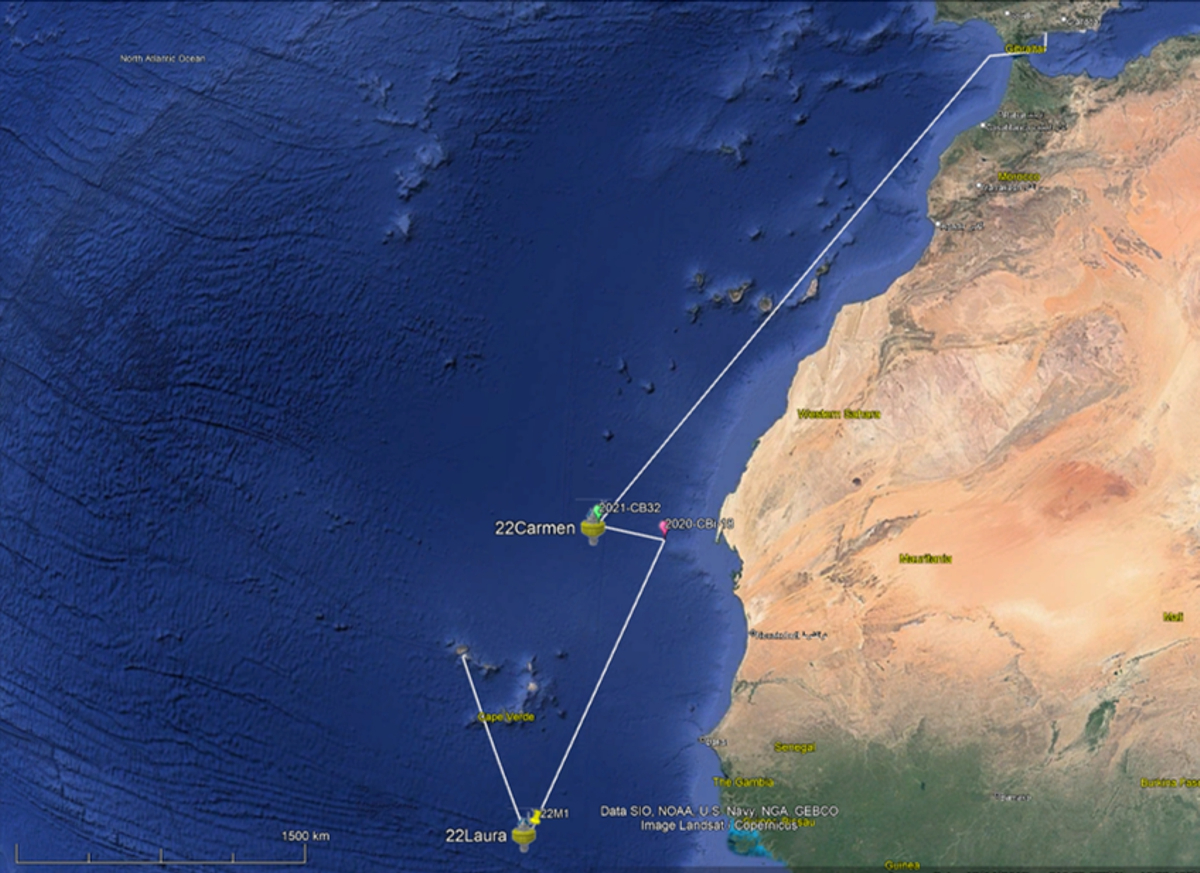
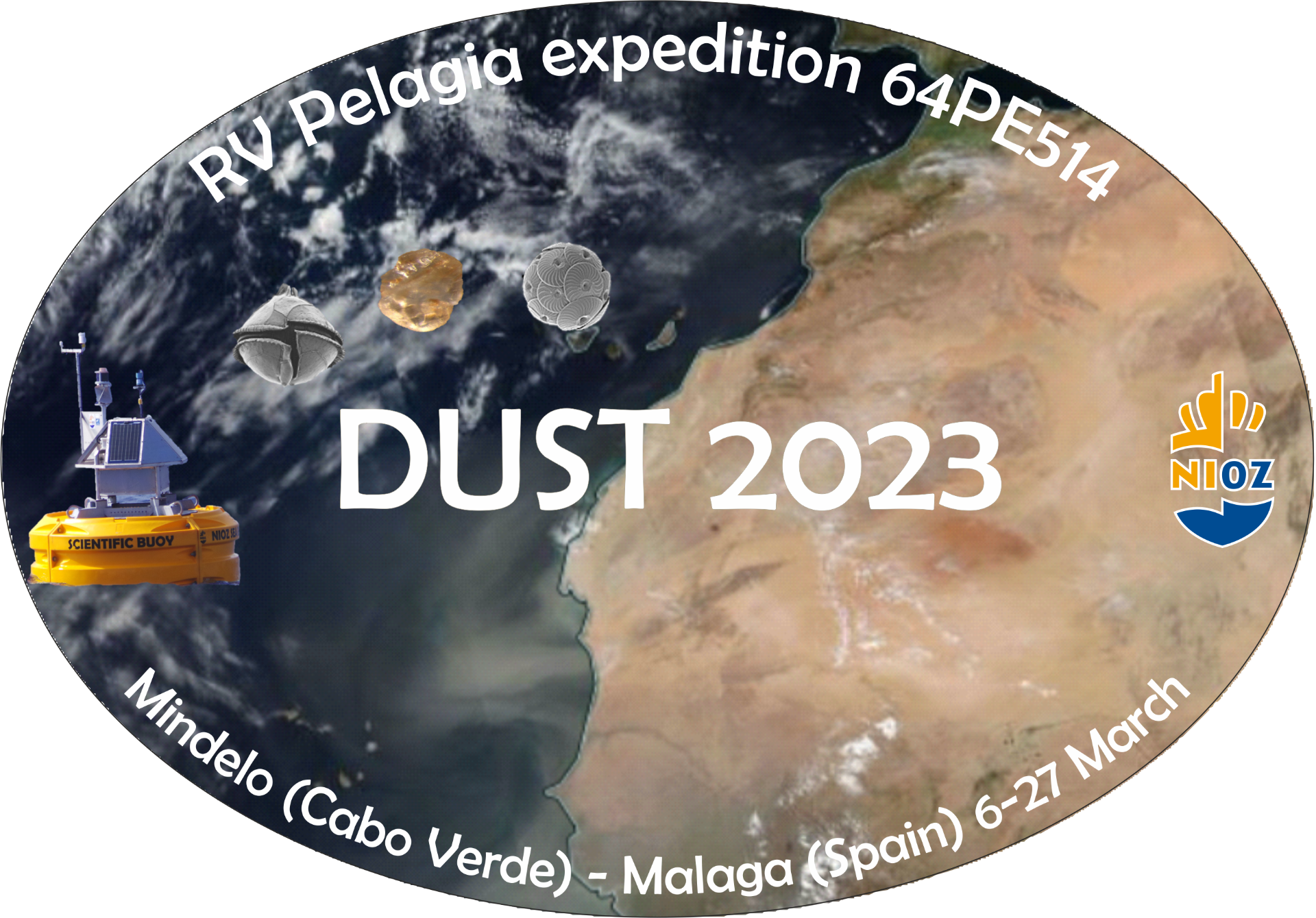
Below this line you will find regular updates, with the most recent post at the top.
27 March - Last oceanic sunrise
Today is the last chance we have to watch the sunrise over the ocean; we are approaching Malaga in southern Spain. To conclude the expedition, we are once more in for a treat. We wonder if it is dust that makes the sky so nicely orange.....
This is also the end of this blog. Thanks for following us!
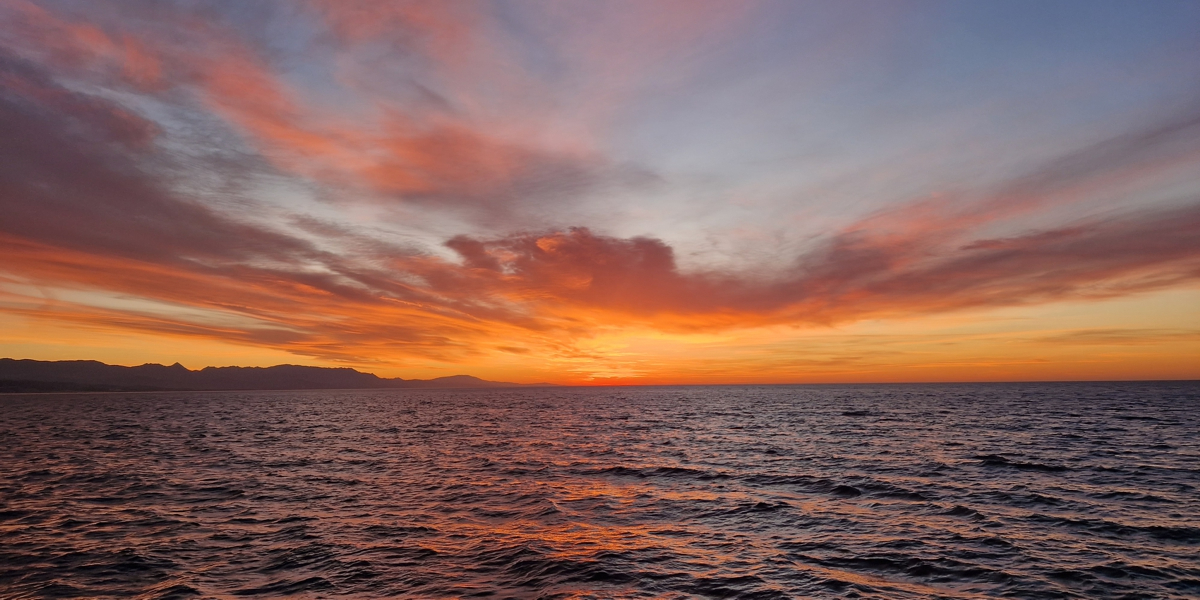
27 March - Strait of Gibraltar
With the relatively slow speed of the ship (5 knots) we dare fly the drone to register the entrance to the Strait of Gibraltar. We see many different kinds of animals: pilot whales, sperm whales, killer whales (orcas) and --of course-- dolphins: a very nice welcome!
26 March - unusal view on the little blue boat
So far, the weather has not been so bright and beautiful as today, so we fly the drone once more to get a different perspective of our temporary home.
26 March - the last CTD
In total nine times Catarina (MARE-Lisbon) and Rene (Ship electrician) have operated the CTD from the control room. The radio is used for contact with the person at the winch who lowers and hoists the CTD-rosette after Catarina's commands, now and then spiced up with a kind "alsjeblief". The last station we sample at shows a profile in which the so-called "Mediterranean Outflow" can be distinguished; at a depth of about 1km there is a salty layer that only occurs in this part of the eastern North Atlantic Ocean.
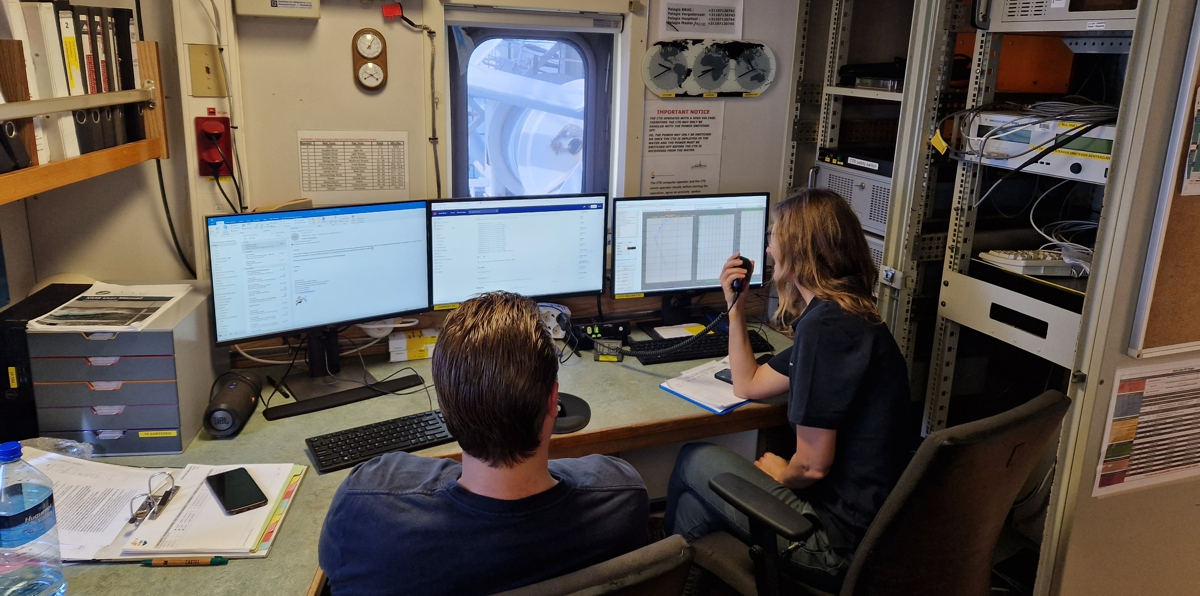
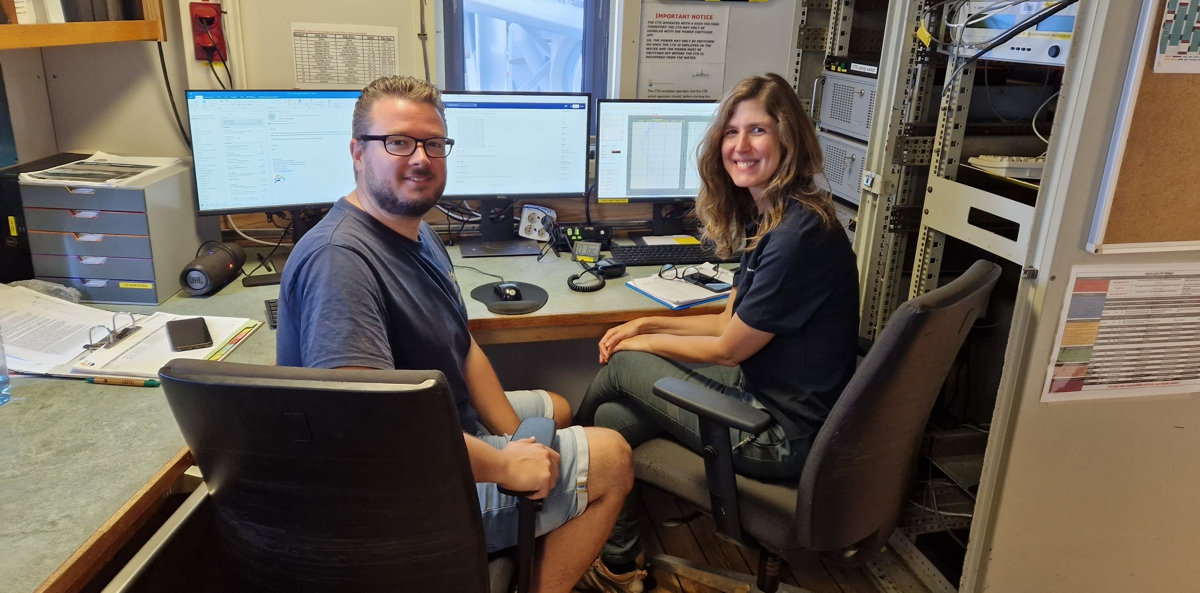
25 March - incubations
Parallel to all other things that are happening on deck, Anouk and Addison (assisted by volunteers Blanda, Runa and Katell) are still carrying out their so-called 'incubation experiments' (see post of 15 March); in large (1m³) tanks with sea water they monitor the response of phytoplankton to artificial additions of mineral dust. Every day they take a few liters of water, which they then filter in one of the containers in the belly of the ship. They are observing a colour change on the filters, so clearly something is happening in the tanks! Back home in the lab they will be able to determine what exactly was going on inside the tanks.
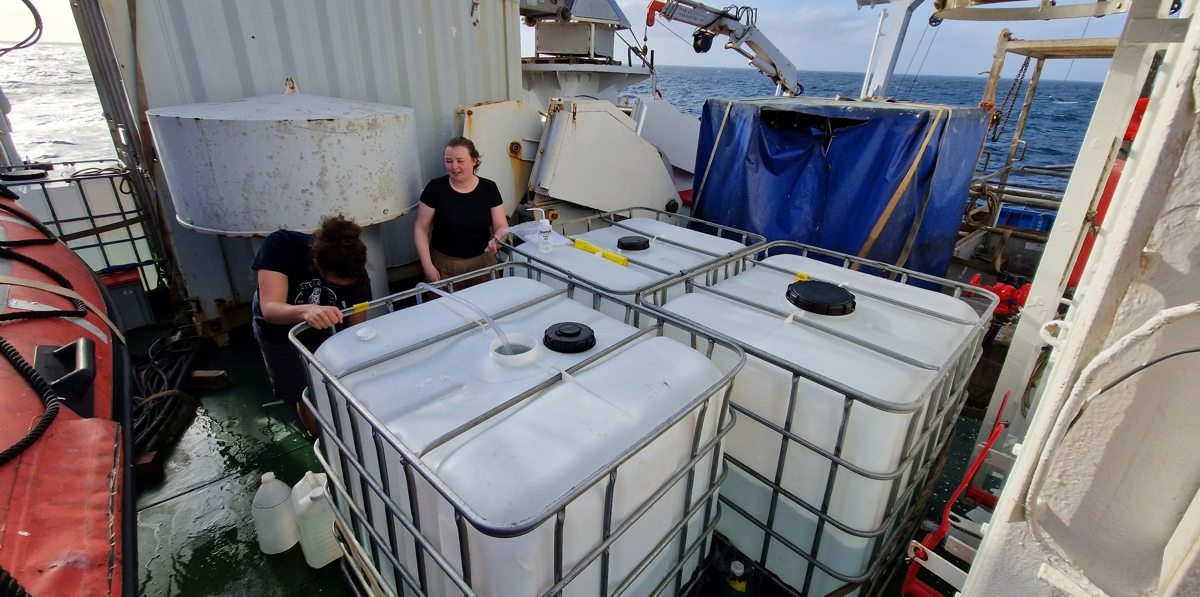
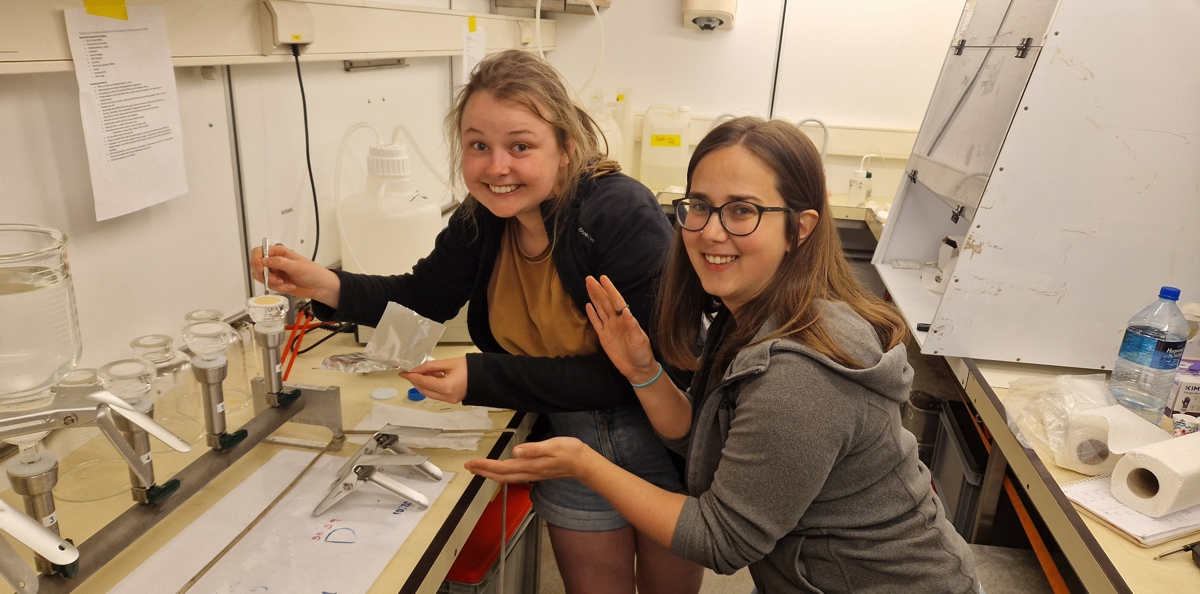
24 March - dust-collecting buoy 23Carmen
After the escape from her mooring line and adventures in November last year (see blog) we have checked and repaired all instruments on buoy Carmen and re-deployed her on her original position in the open ocean off Cape Blanc. We hope to find her back in this position in two years, packed with new data and samples.
24 March - teamwork on deck
The deck crew consisting of bosun Cor and his team: Peter, Stephan and Ruslan, MARUM technicians Götz, Marco and Ramona and NIOZ technicians Jan Dirk and Barry have developed a very efficient way of handling the recoveries and deployments of all the instruments for the scientists. It is clearly not the first time they are doing this, nor the first time they are working together and the years of experience pay off nicely. In addition, they clearly enjoy working together and in close collaboration with master Henk's crew of officers on the bridge: Kelly, Ravi and Kevin, all these operations run very smoothly.
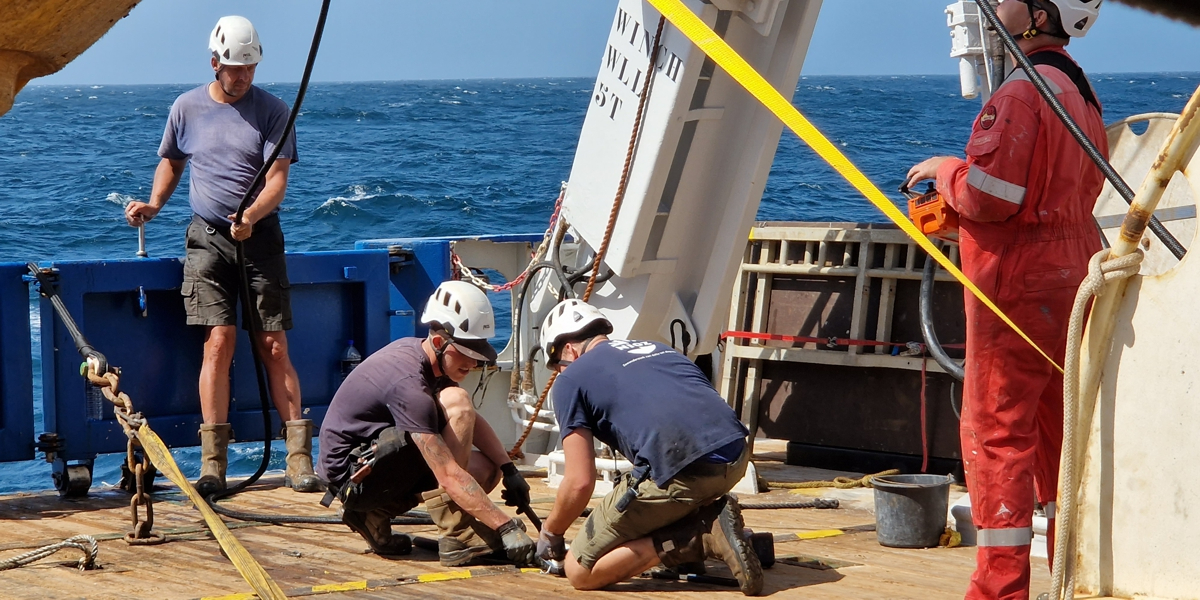
23 March - 360° view of RV Pelagia
We use the opportunity of good weather and being at station to fly the drone and film our 'little blue boat' from all sides.
23 March - sea-floor sediments³
Here you see a close up of the sediments we recovered from the sea floor with the multicorer. The material was sieved over a 250µm (¼mm) sieve and when studying it with a microscope (60x magnified) it becomes clear that this material is dominated by white-ish calcium carbonate shells of --mostly-- planktonic organisms called foraminifera. Most of these unicellular organisms grow by making new chambers, the last one a tick larger than the previous one. In doing so, they register the ambient conditions of the water they live in, such as temperature, salinity etc. There are tropical species and species adapted to colder waters. As a result, they provide heaps of information about past ocean conditions and can thus be used to understand climates of the past.
A much smaller portion of these sediments consist of land-derived material, in this case (so close to a big desert) Saharan dust. Back home in the lab we use strong acids to dissolve the calcium carbonate tests of the forams so that we can study the dust particles.
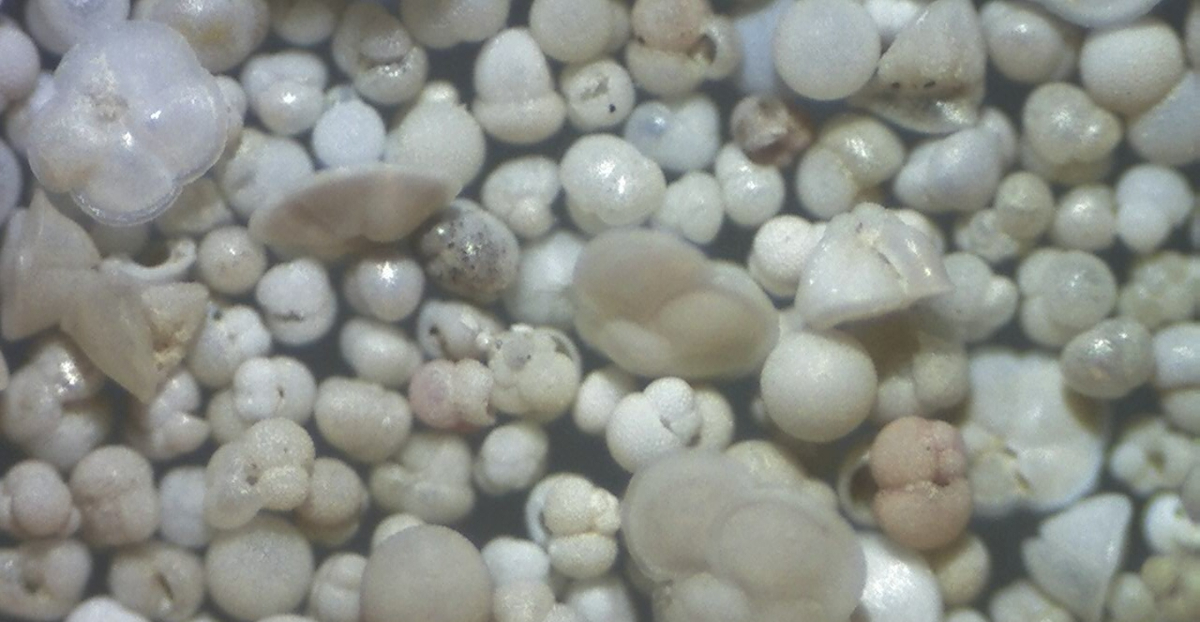
23 March - sea-floor sediments²
All ten mini-cores yielded a core of about 20cm; a successful deployment! Four tubes in the frame are metal; these will be used to study the sediments for microplastics. The other cores are transparent and provide a glimpse of what the sea floor looks like; a white-ish to yellow colour shows that these sediments are made up mostly of (white) calcium-carbonate shells of plankton.
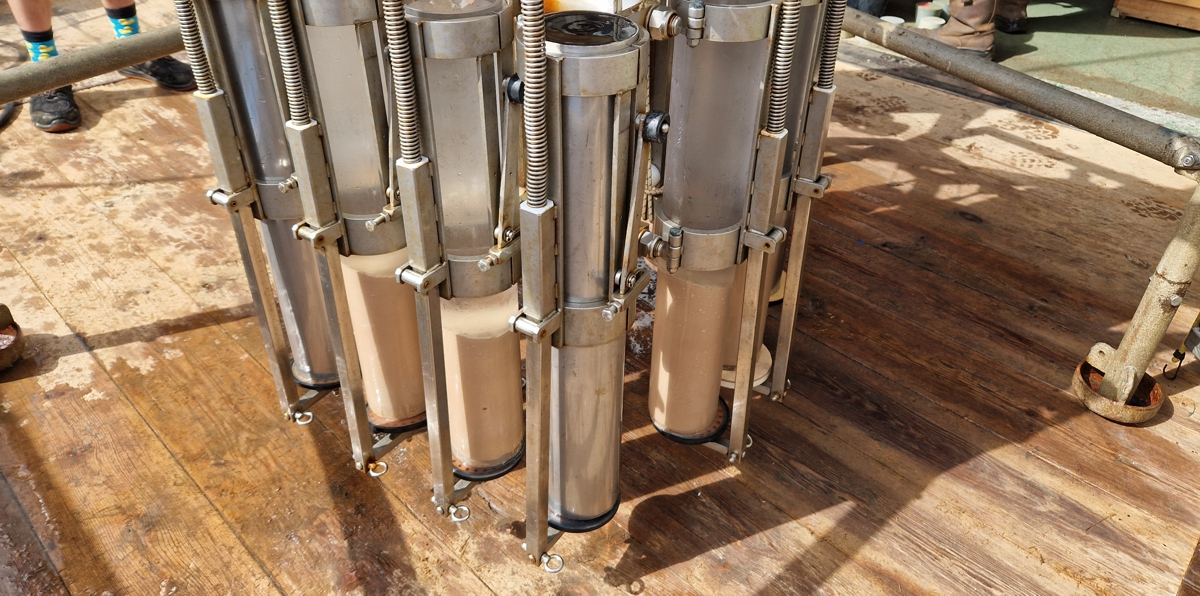
23 March - sea-floor sediments
The sea floor can be sampled with various types of coring devices but since there is quite a lot of weight required to push these instruments into the sediments that piled up on the sea floor, often the actual sea bottom is disturbed. One way to avoid this problem is the so-called multicorer; ten tubes are pushed gently into the sediments and when hoisting the instrument up, lids are placed below and under the tubes such that the sediment-water interface (the actual sea floor) is sampled very nicely. This way, the upper 20-30cm can be sampled and then later compared to longer sediment cores in which maybe the upper 10cm is disturbed. Together they then form a complete image of the sediment archive.
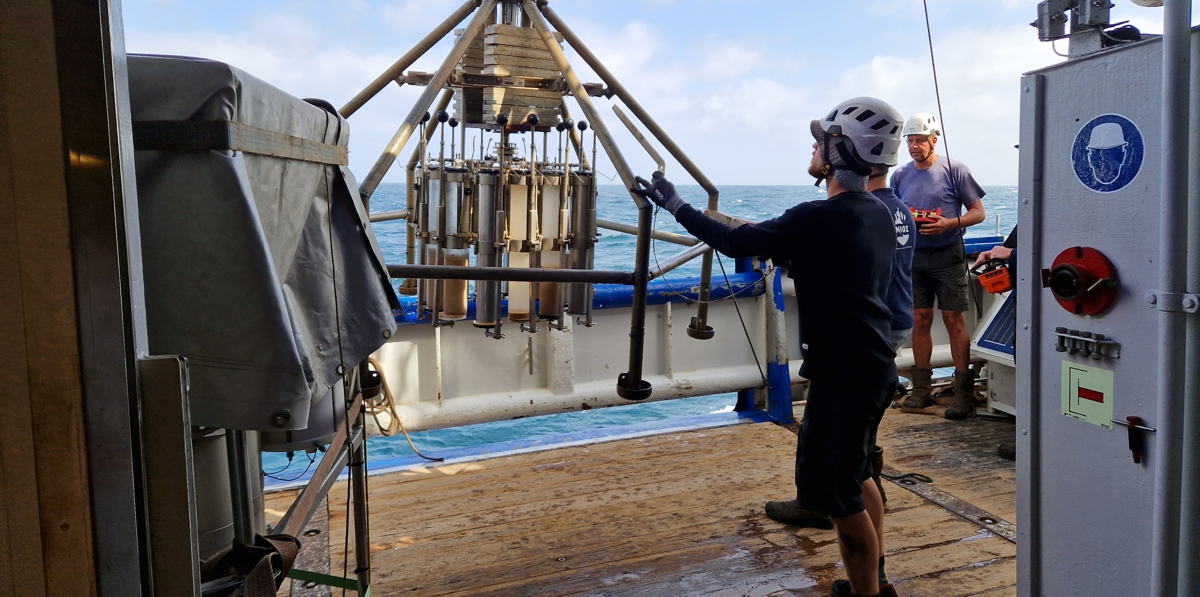
22 March - drifting trap: filtering
One of the four tubes per depth had a petri dish with gel, the other three tubes per depth are filtered over different types of filter, depending on the topic they will be studied for. Here you see a glass-fibre filter, which will be analysed for its organic components. The snow flakes have fallen apart on the filter, leaving the yellow-green colour of organic material. This fraction is likely to decompose on its way down the water column and only a tiny fraction of it is eventually preserved in the sediments on the sea floor, a few kilometers further down. In addition to the soft organic material, small bugs can be discerned, including white-ish shells of calcium carbonate tests produced by foraminifers, another type of plankton. These shells are more robust and more likely to reach the sea floor. We hope to find them when sampling the sea floor with the multicorer.
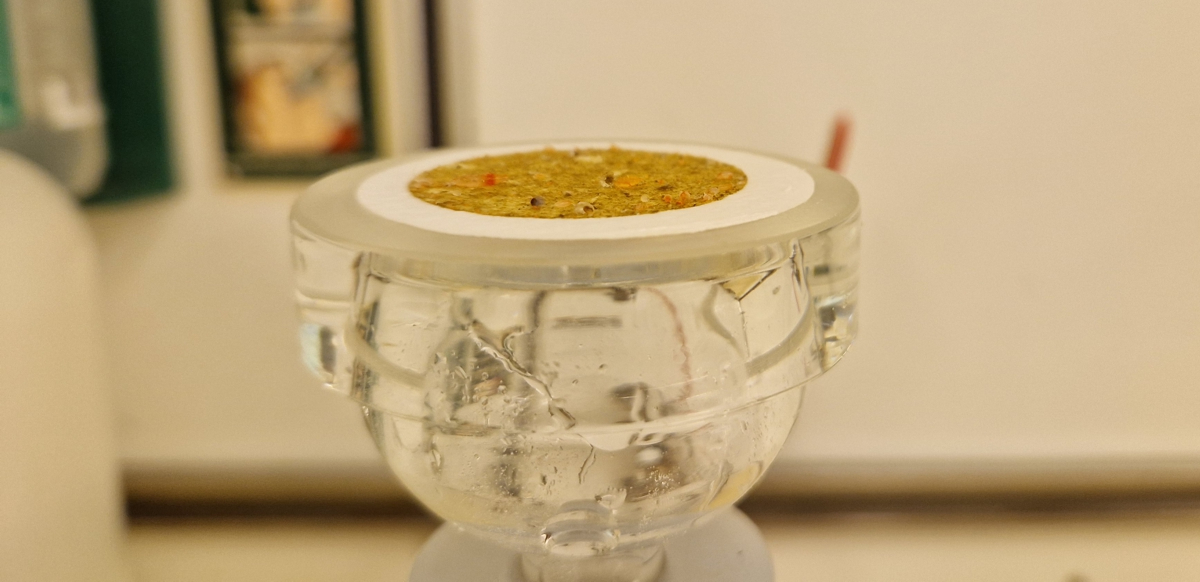
22 March - drifting traps: marine snow
The fragile "snow flakes" are falling apart as soon as they are touched, which makes them very hard to study. However, there is a trick; a petri dish is filled with a transparent gel in which the flakes are "fixed". The gels are consequently frozen and will be thawed up again back home in the lab, where they can consequently be studied.
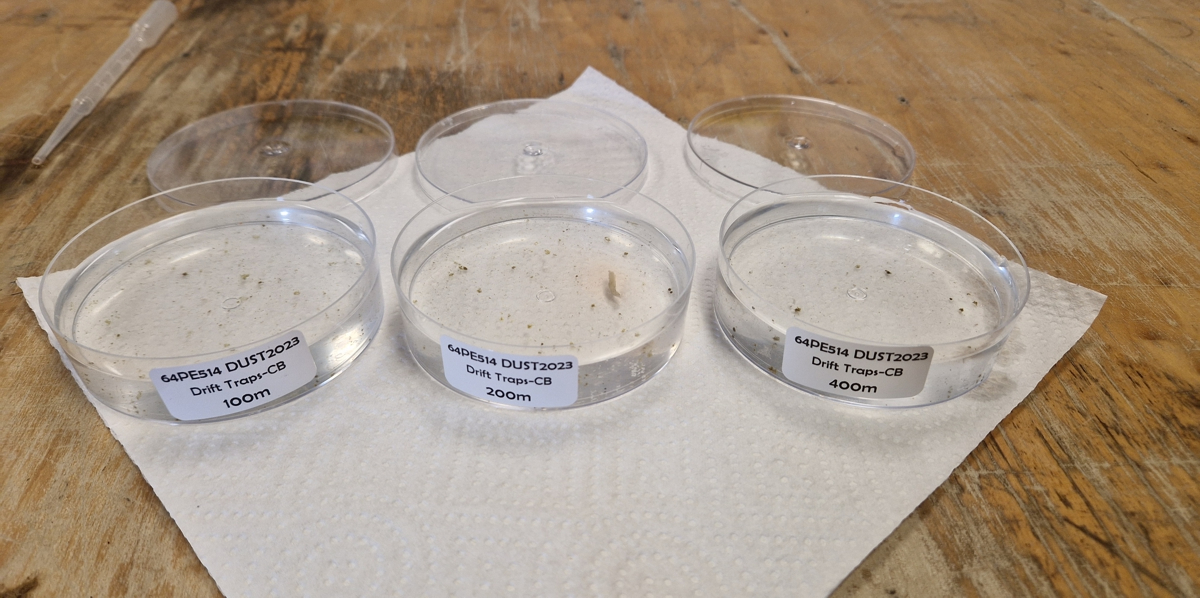
22 March - harvesting the drifting traps
After 24 hours, we recover the tubes of the drifting traps, which have intercepted settling material (remains of planktonic algae and protists, phytoplankton, zooplankton etc but also dust particles), which we let settle to the bottom of the tube before we process the samples further. Usually, this material settles in very fragile aggregates which is called "marine snow". This material is so fragile that it is very hard to sample as a "snowflake".
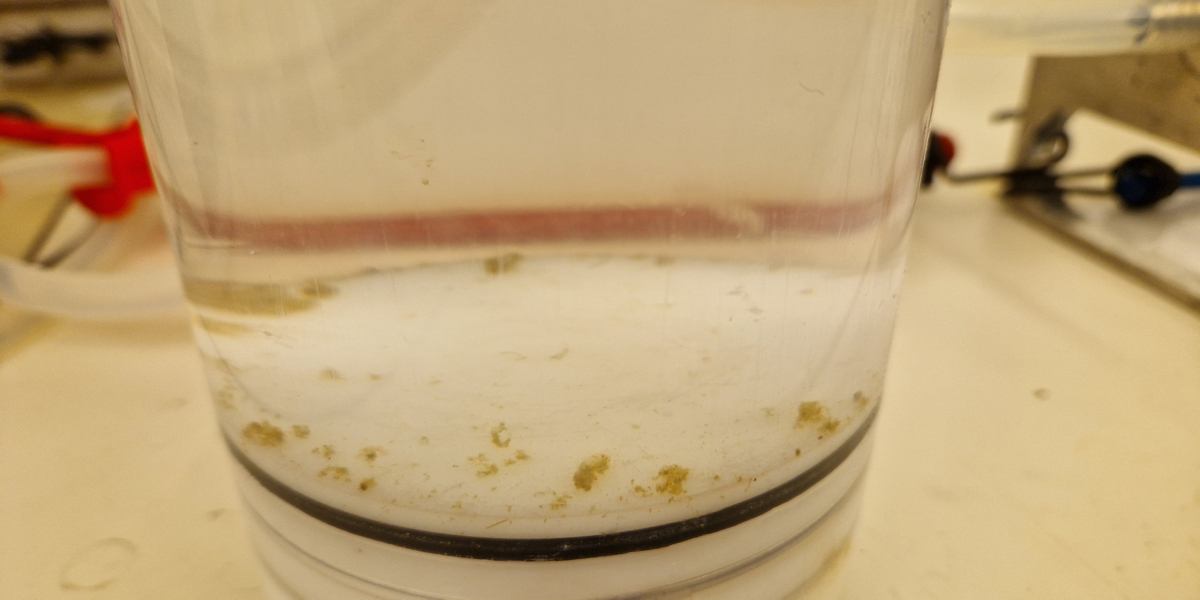
21 March - drifting traps
At three stations we have deployed the drifting traps, which have been drifting freely for 24 hours. The traps consist of three frames with four tubes each that are open to the top and collecting material settling through the water column at 100m, 200m and 400m water depth. Here you see AB Peter and NMF technician Barry preparing one of the frames under the watchful eyes of MARUM technician Marco.
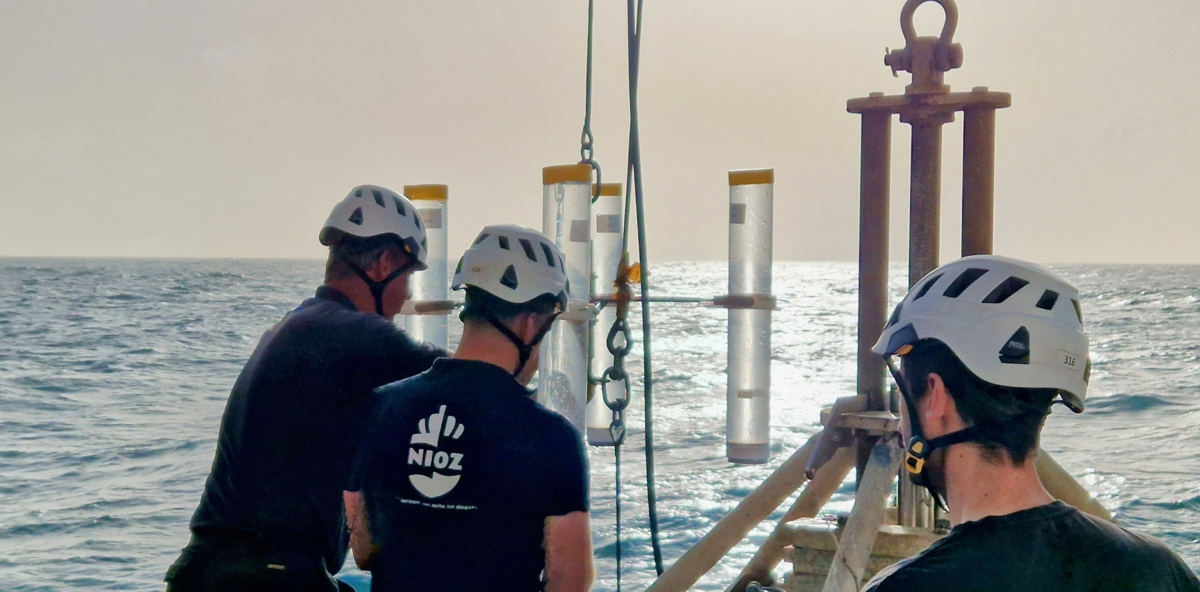
21 March - high-volume dust samplers
Every day, Blanda climbs to the ship's highest deck to exchange the filters in the two high-volume dust samplers. These samplers basically consist of a vacuum-cleaner engine, pumping large volumes of air (>1,000m³ per 24 hours) through a Letter-sized (21.6 x 27.9cm) filter.
Although we can see that the air is pretty loaded with dust, and there are considerable amounts of dust lying about on the ship's decks, the filters do not appear that very orange; the typical colour of Saharan dust. We suspect this has to do with a fact we observed before; when there are also other aerosols about, such as soot and smoke from (forest) fires, the mixture of grey/black and orange dulls the orange colour considerably. Back home in the lab, we will study one filter for the dust content and dust properties like size and composition. To isolate the dust, we will oxidise the filter + the soot. The other filter will be analysed for its organic components.
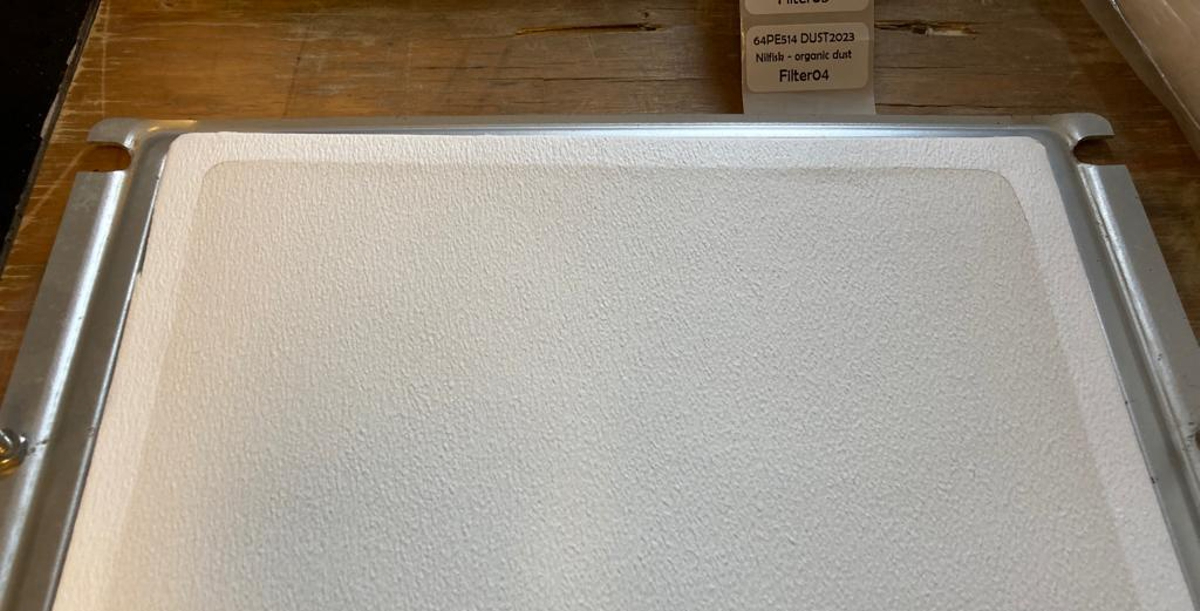
20 March - anchor drop with a splash
A 1.2 ton weight makes quite a splash!
19 March - CTD recovery
This video shows the recovery filmed by a drone
19 March - sampling water with the CTD
In this little clip you see how the CTD is coming back from the deep (4,500m) ocean and put on deck.
18 March - dust collection for microbiology
Yet another way to collect dust is being done with the OMNI sampler on one of the higher decks of RV Pelagia. Dust is sucked into a chamber in which sterile water is centrifuged. At the end of the sampling time (a few hours) the dust is then stored in a little container. It is then put into the -80°C freezers to stop any biological activity. Back home in the lab at NIOZ the samples are analysed for their microbiological content.
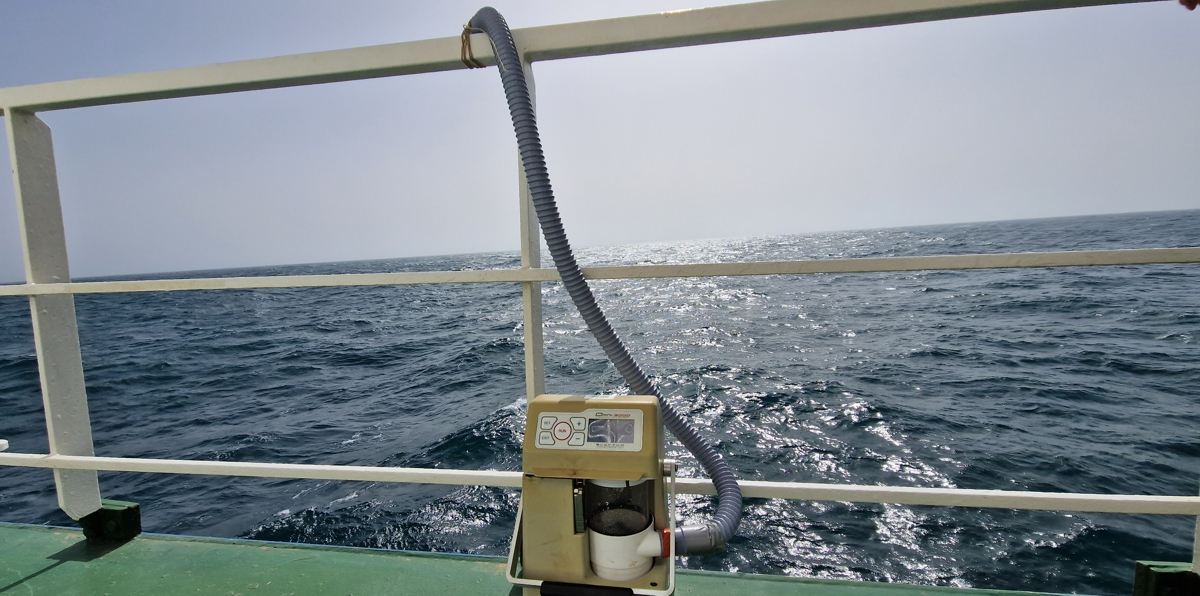
17 March - more dolphins
The lucky few that were on the bridge early this morning saw a large group of dolphins pass by; quite a spectacular sight! (video by 1st officer Kelly Kat)
16 March - cheerful visitors
Today we enjoyed the view of dolphins frolicking in the ship's bow wave!
16 March - 60 shades of orange
The filters that the dust is collected on are polycarbonate filters, which can --fortunately-- stand water. Although the equipment is designed in such a way that the dust collector does not open when it is raining, now and then some water enters the system nonetheless. This is clearly seen on the filters; they get transparent (second from the right) and sometimes the water causes the dust to aggregate (left-most filter).
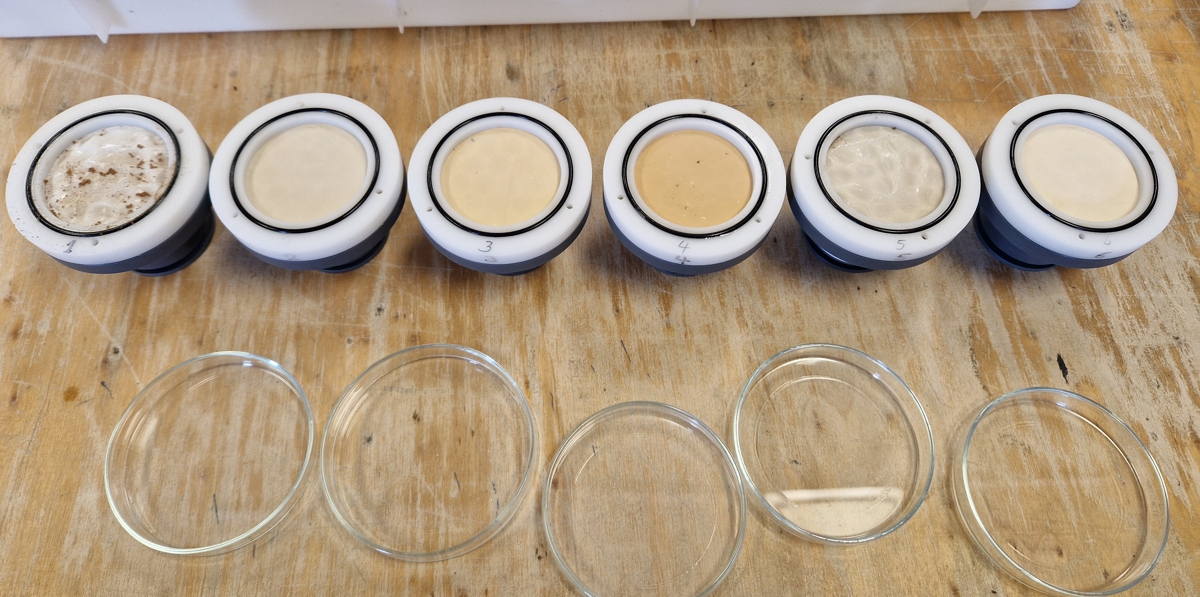
16 March - dust collected by buoy Laura
Every time we open the buoys' interior, we are excited to see how much dust was actually collected. The colour changes tell us that indeed some filters are loaded with dust! the colour changes may be caused by amounts of dust that were collected but also by changes in the source area(s) of the dust. This is something that we aim to sort out through comparing the composition of the material with that of known sources of dust, as well as by satellite images on which the dust plumes may be seen and tracked back to their origin.
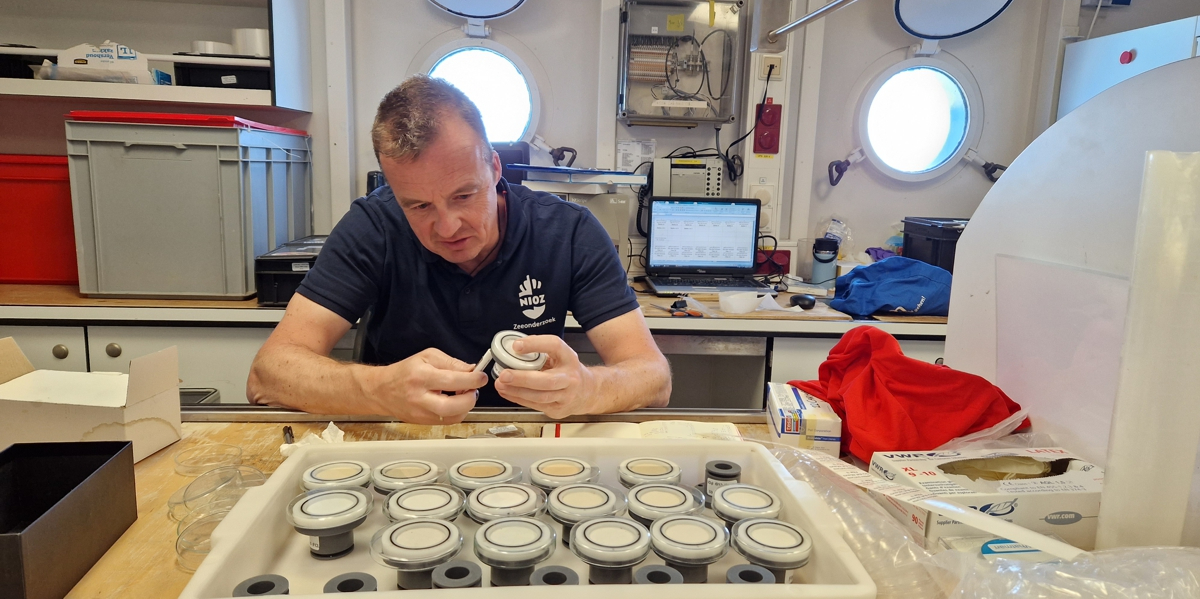
15 March - filtering for cocco's
Another cruise participants that spends a lot of time at the container deck is Catarina, who filters water from the CTD to isolate the coccolithophores, a pytoplankton group also known as cocco's. These cocco's are known to be able to respond very fast to changes in nutrient supply and from previous results she/we concluded that they indeed respond to dust deposition. The exact how/why/where/how much is far from known yet, which is why we are taking regular stops along our transect to collect water that Catarina carries down to her lab to filter and study.
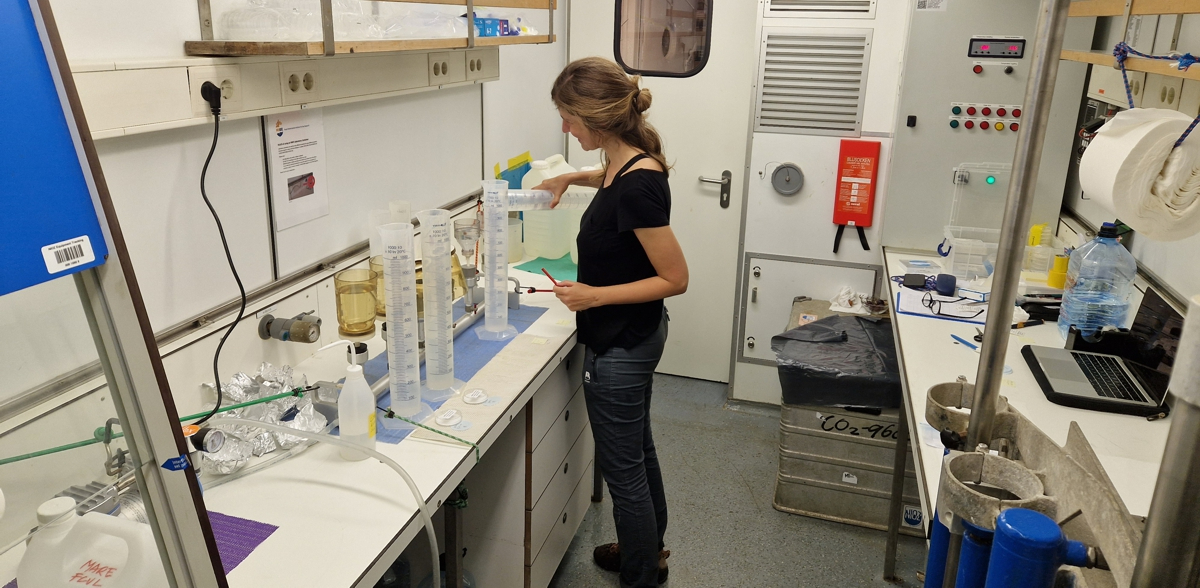
15 March - incubation experiments
One deck above the main deck there are six 1m³-tanks (in Dutch: kuubvaten) in which so-called incubation experiments are carried out. At station M1, the tanks were filled with sea water and then dust was added to them. Every day, subsamples are taken and analysed to try and quantify the effects of the dust additions. Here you see how Anouk, Addison and Blanda are doing their daily routine of subsampling the tanks. After taking the samples, they need to bring the bottles two decks down to where the lab containers are; no additional workout needed!
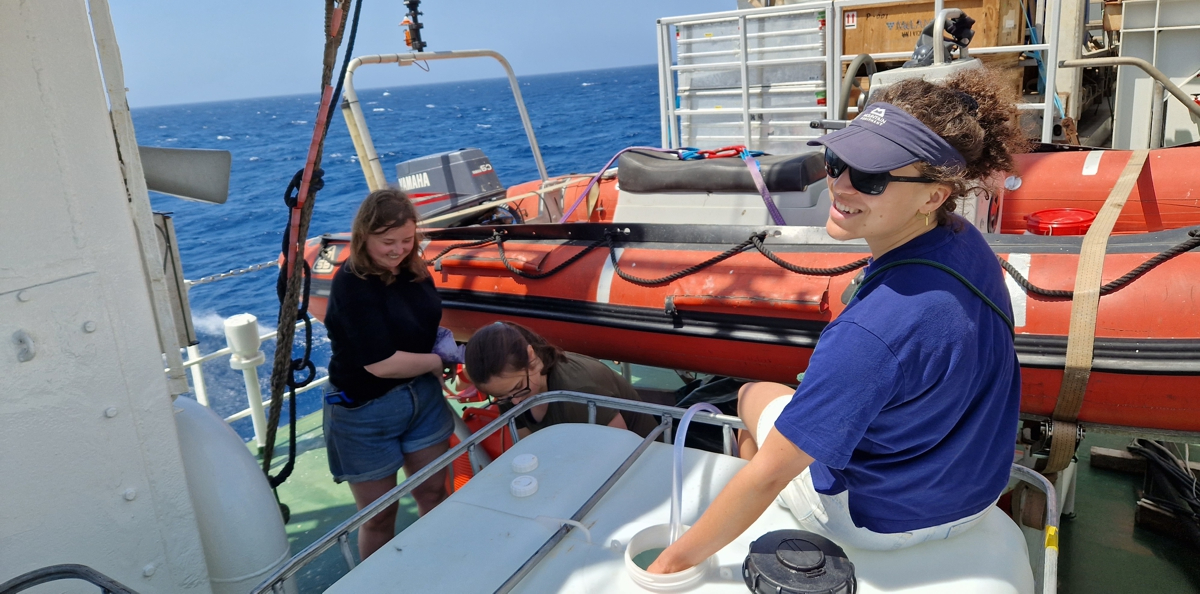
15 March - dusty sunrise
In the absence of clouds, we enjoy nice colourful sun sets every day but also sunrises are quite nice; the layer of dust that is present in the lower atmosphere colours the first rays of sun. Later in the day, the dust offers a natural protection against the sun.
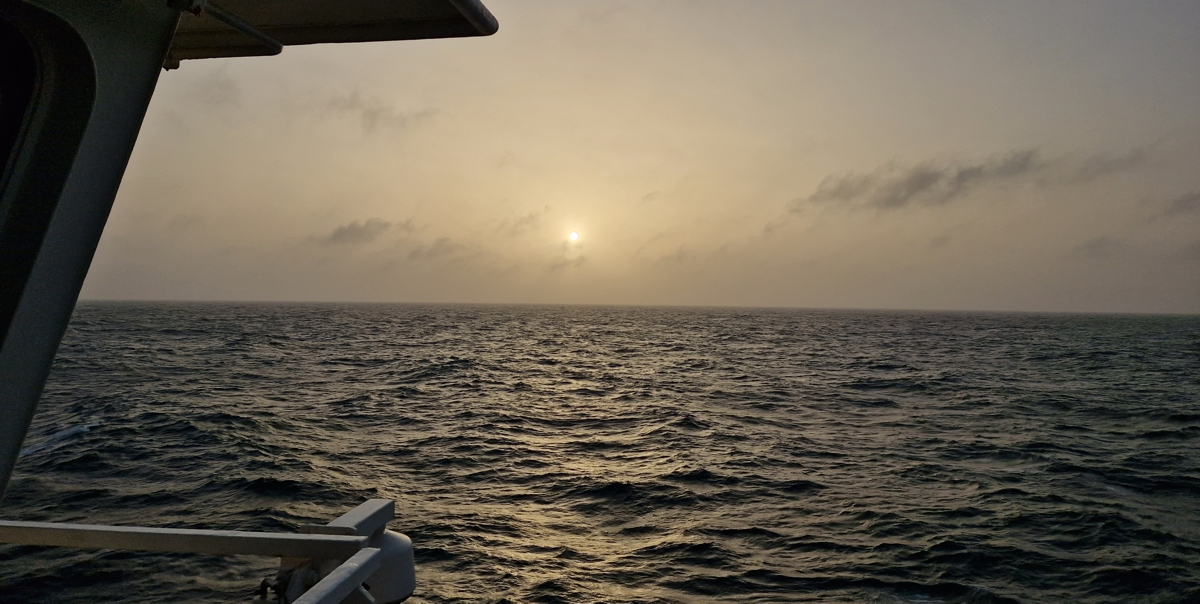
14 March - wet-dust collector
During one of the previous expeditions onboard FS Meteor in August 2017 (see blog), we sampled a tropical rain shower and were surprised by the enormous amounts of dust that were washed down with the rain. The amounts of so-called "wet dust" deposited into the ocean are hard to quantify and therefore the buoys were equipped with rain collectors last year during expedition MSM104 SIPA (see blog). These collectors consist of a set of twenty bottles in a carrousel. When the rain detector detects rain, a lid opens so that rain can wash into a funnel feeding the bottles. Apart from some settings that could be optimised, the first results are very promising; dust containing rains were indeed sampled: a first!
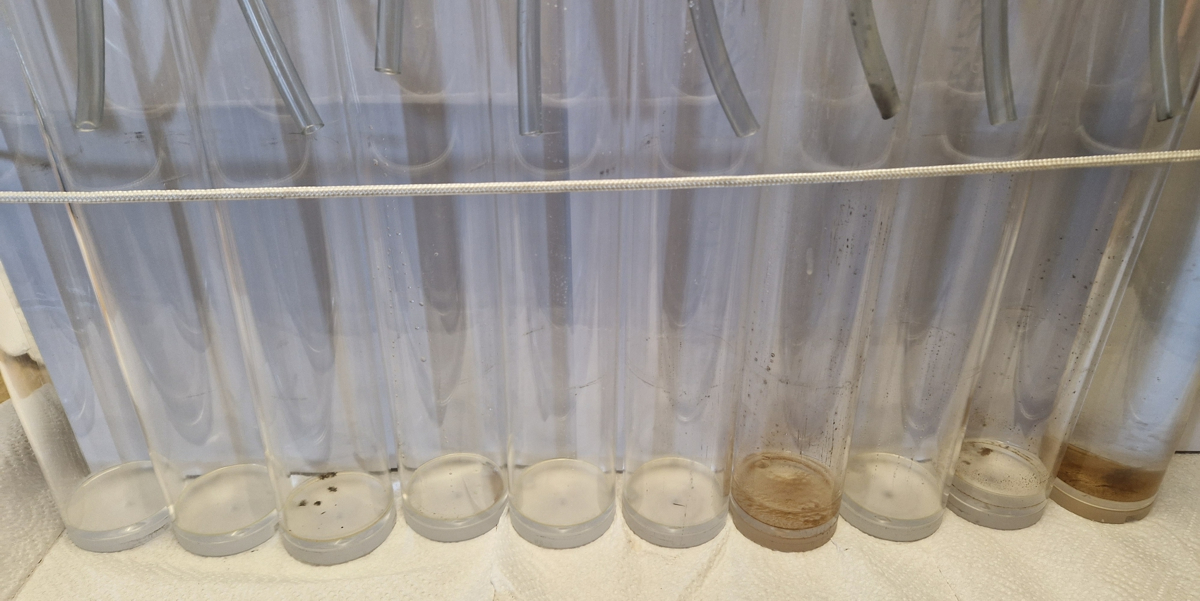
14 March - visiting Sal
We had to have a small crew exchange, for which we used the island of Sal. Here you see the tiny little boat with which this exchange took place. The sailor was very skilled to position his little boat next to the Pelagia so that everything went very smoothly.
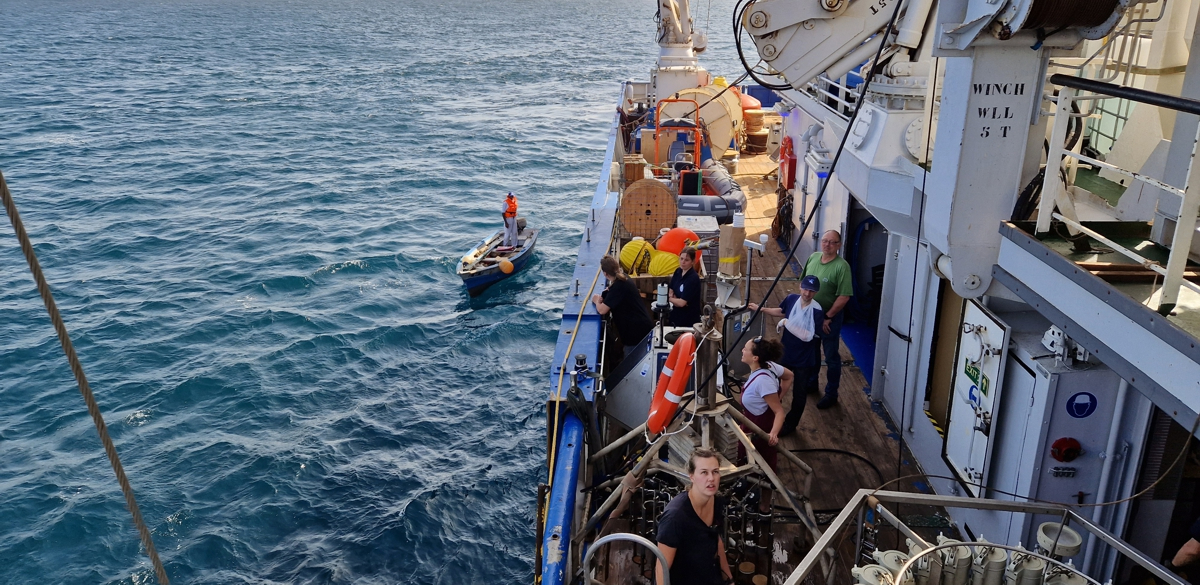
13 March - harvesting the MUC
Once on deck, the N=10 tubes of the multicore are removed from the frame and the cores are sub-sampled. Four of the tubes are metal and they are treated with special care to study microplastics in the sediments. Some cores are stored (frozen) intact for further study at home, some are sliced in 1-cm thick slices. Katell and Runa are having a good time sampling the mud!
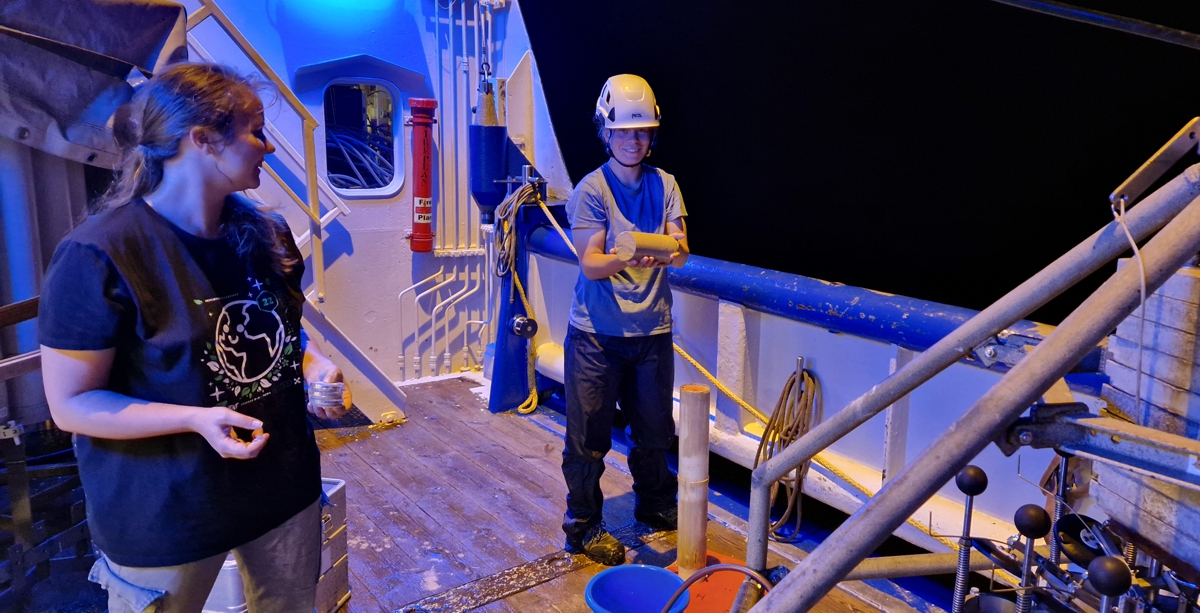
13 March - preparing the multicore
The multicore is a device that is lowered onto the sea floor, where it consequently pushes in 10 tubes simultaneously. By placing a cap both under and on top of these tubes, small cores of about 30-40cm are retrieved from the sea floor, with the sediment-water interface still intact. Here you see NIOZ-technician Jan Dirk (with MARUM shirt) preparing the multicore, under the watchful eyes of MARUM technicians Götz and Marco and PhD student Runa.
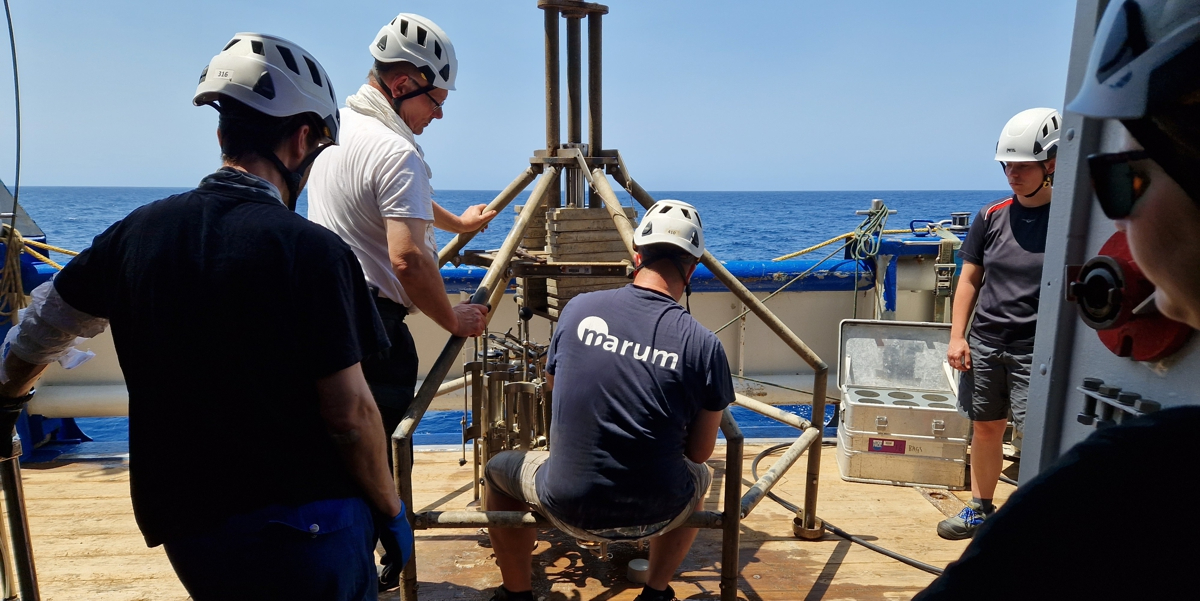
13 March - harvesting the drifting traps
The multicores have been collecting material settling through the water column for 24 hours. Once recovered from the ocean, we process them in the lab by filtering them, after which they can be studied with one of the microscopes we brought with us and for further analysis in the lab back home. What we are most interested in, is to see if the dust that we are seeing all around in the atmosphere has an effect on the composition of the water column in terms of the different types of phytoplankton. Here you see Blanda in the wet lab processing one of the drifting-trap tubes.
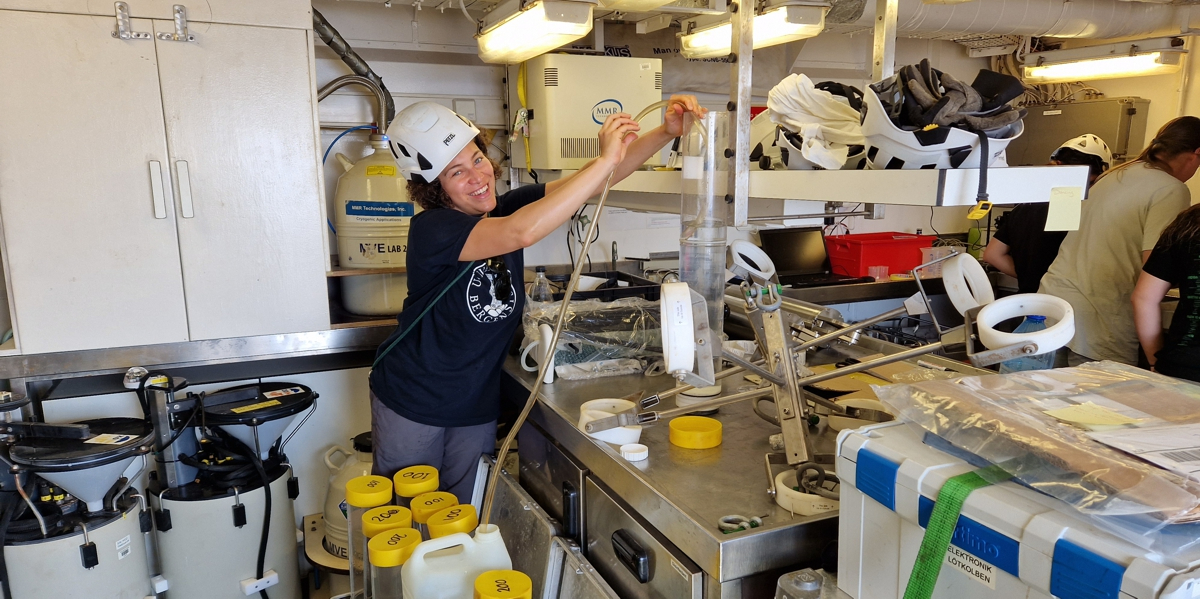
12 March - dusty sunset
Sunsets at sea in this part of the world are usually very colourful due to the large amounts of dust in the atmosphere. Every year, about 180 million tons of dust are blown onto and over the Atlantic Ocean towards the west (Yu et al., 2015) and this can be seen most clearly whenever the sun is low over the horizon.
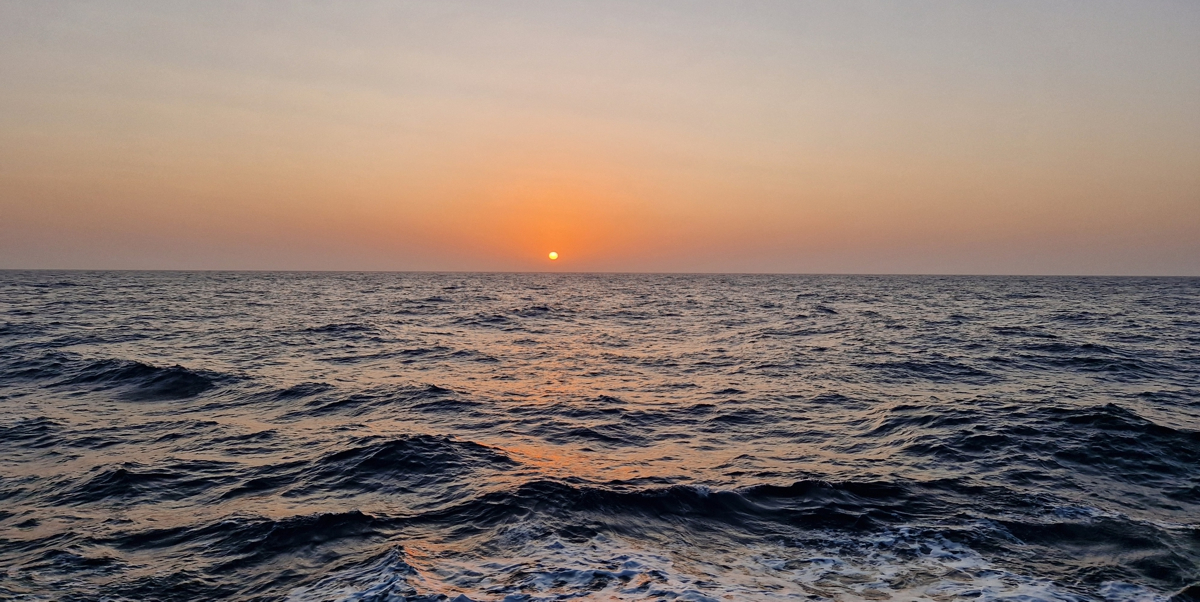
11 March - all hands on the bridge!
Next up is the recovery of the submarine sediment traps that have been collecting material (both Saharan dust and organic material + remains of phtoplankton living in te ocean) settling towards the sea floor. The unique aspect of this time series is the very high temporal resolution at which material is collected: four days. This way we hope to be able to study individual dust outbreaks and their marine environmental effects.
After release of the anchor, the orange smartie rises to the ocean surface where it pops up. Everybody is keen to be the first to spot it and get five chocolate eggs as reward. While everybody looks to the front of the ship, eagle-eyed Blanda spots the smartie near the ship's aft.....
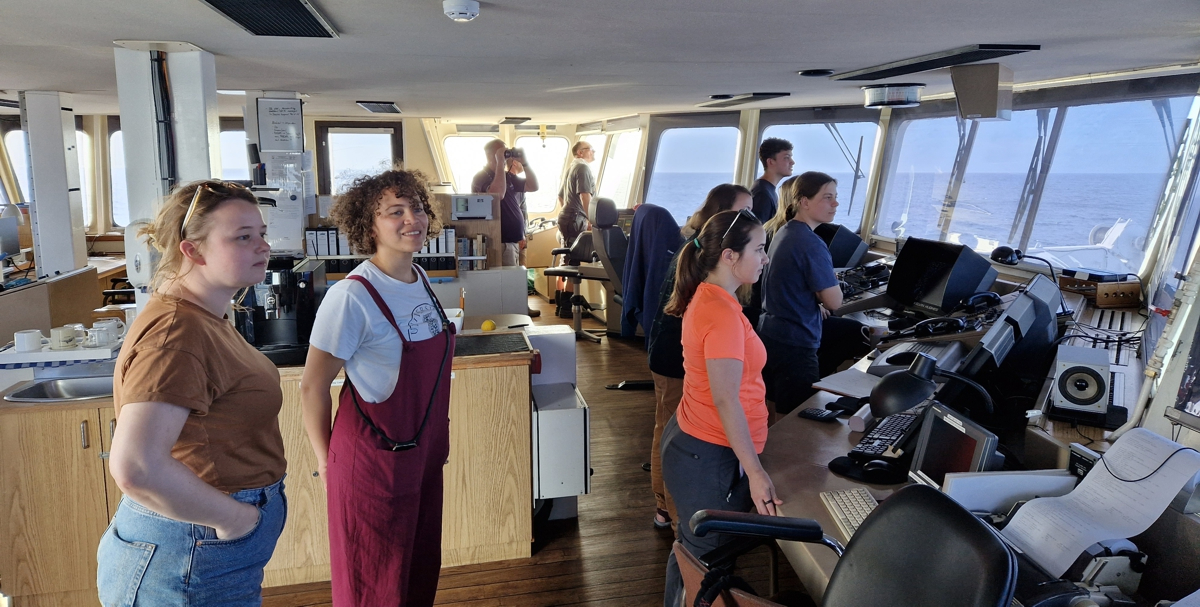
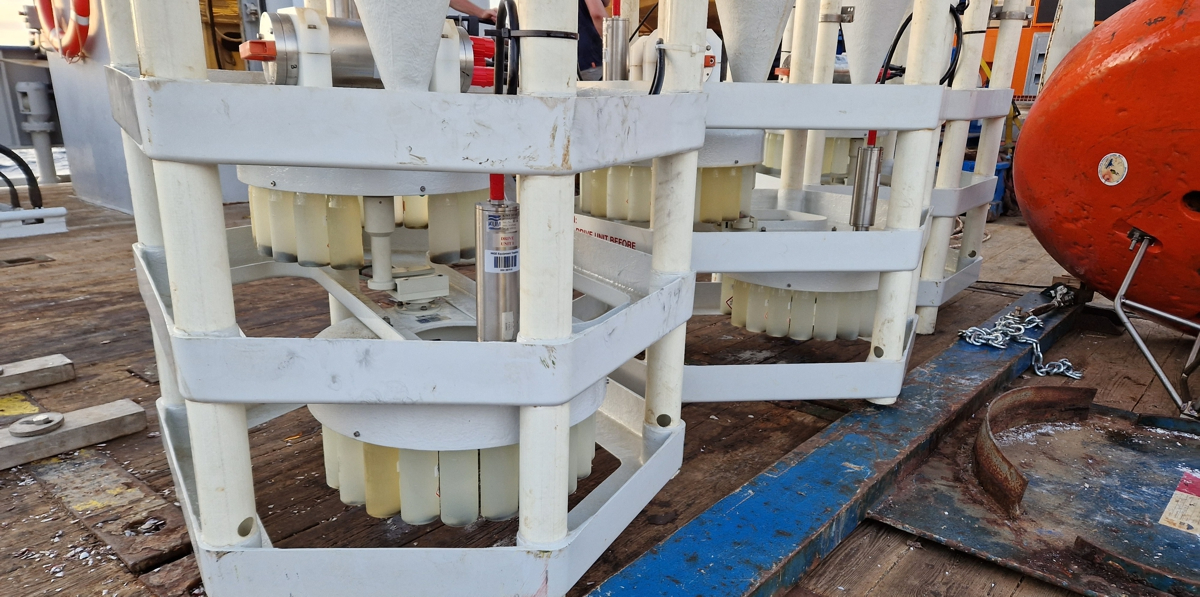
10 March - buoy Laura ready for re-deployment
After a quick service in the workshop-on-deck, buoy Laura is ready to be deployed for another year of data and sample collection.
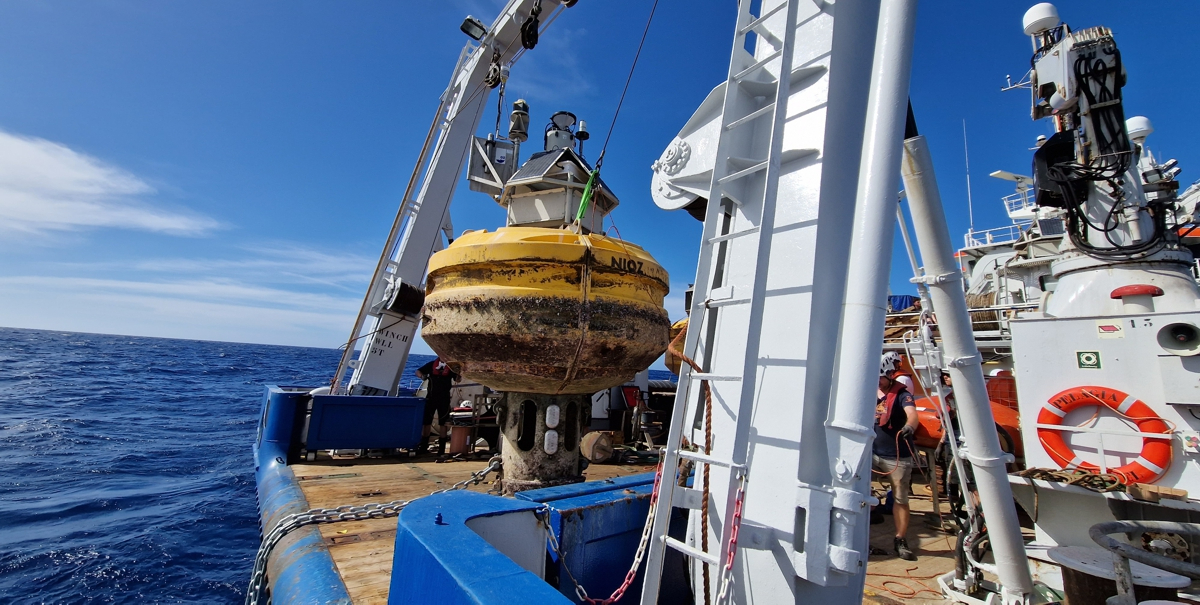
10 March - buoy ecosystems
The buoys and buoy parts are usually covered with all kinds of creatures, which is also why there are always a lot of fish swimming in the vicinity of the buoys. Especially the calcium-carbonate forming animals such as these gooseneck barnacles offer the opportunity to understand how these animals grow in relation to the ambient seawater properties such as temperature and salinity. The barnacles are considered a delicacy in many parts of the world but this time we resist the urge to eat them....
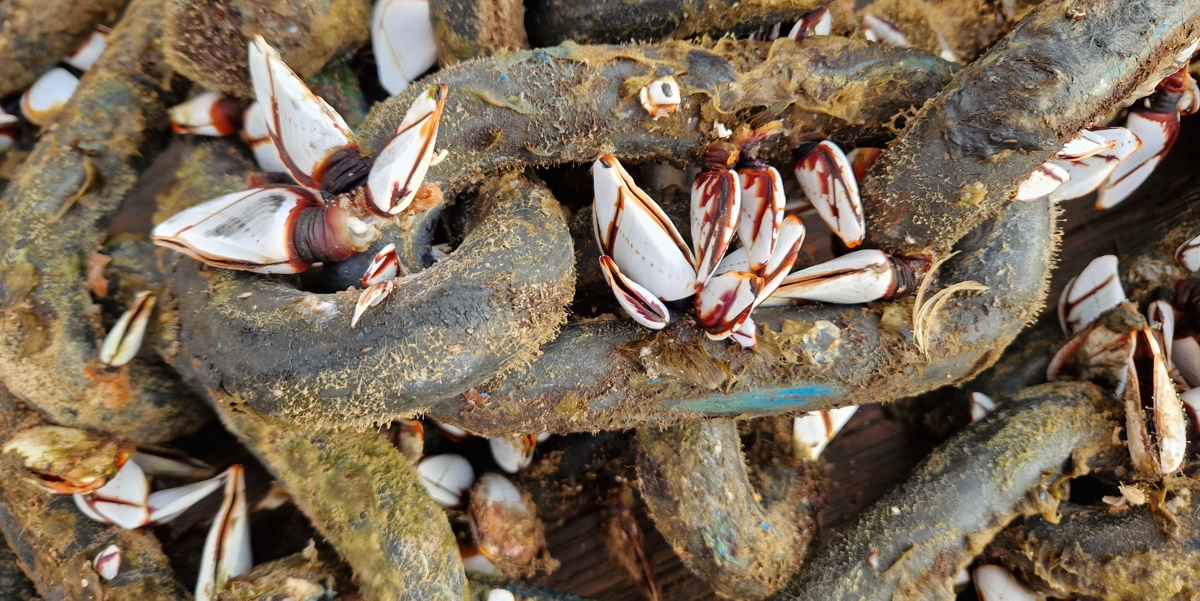
9 March - buoy recovery
In this clip you can see how the dust buoys are typically recovered; with the dinghy two lines are attached to the buoy. To reduce tension on the anchor line with which the buoy is tethered, she is then dragged towards the position of her anchor point. The buoy is then put on deck and the anchor is released and the mooring line is recovered. This requires good communication between captain Henk and his officers on the bridge and NMF technician Jan Dirk and bosun Cor and his crew on deck. The whole operation takes about 8 hours, which is quite exhausting in the sun which is only partly concealed by dust.....
9 March - buoy ahoy!
Twice a day we receive an eMail sent by each buoy to inform us about their status, position, weather report etc. Since deployment during the SIPA cruise in December 2021, we have more than 700 of these positions, which nicely form a cloud around the buoys' anchor points. Nevertheless, we prefer to approach the buoys by early morning, since the flasher on the buoy can be seen from miles away. Fortunately, we are lucky with the weather so that also without the flashlight we have no problem finding buoy Laura.
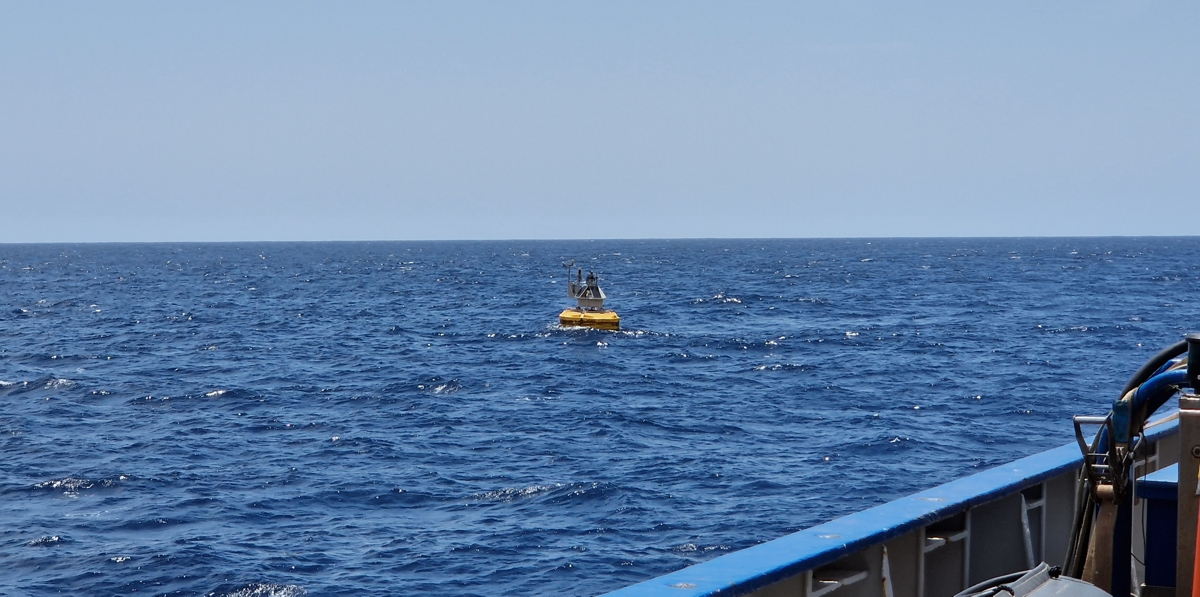
9 March - drifting traps
One of the exciting instruments to collect sediments settling through the water column, is the set of drifting traps that we typically let drift for about 24 hours. At three different depths (100m, 200m, 400m) there are four tubes hanging in a gimbal construction, which keeps the tubes upright so that they can intercept material (dust but also organic matter and algal remains) settling through the water column. The last few days have been particularly dusty, so we are expecting to see this when we recover the traps tomorrow.
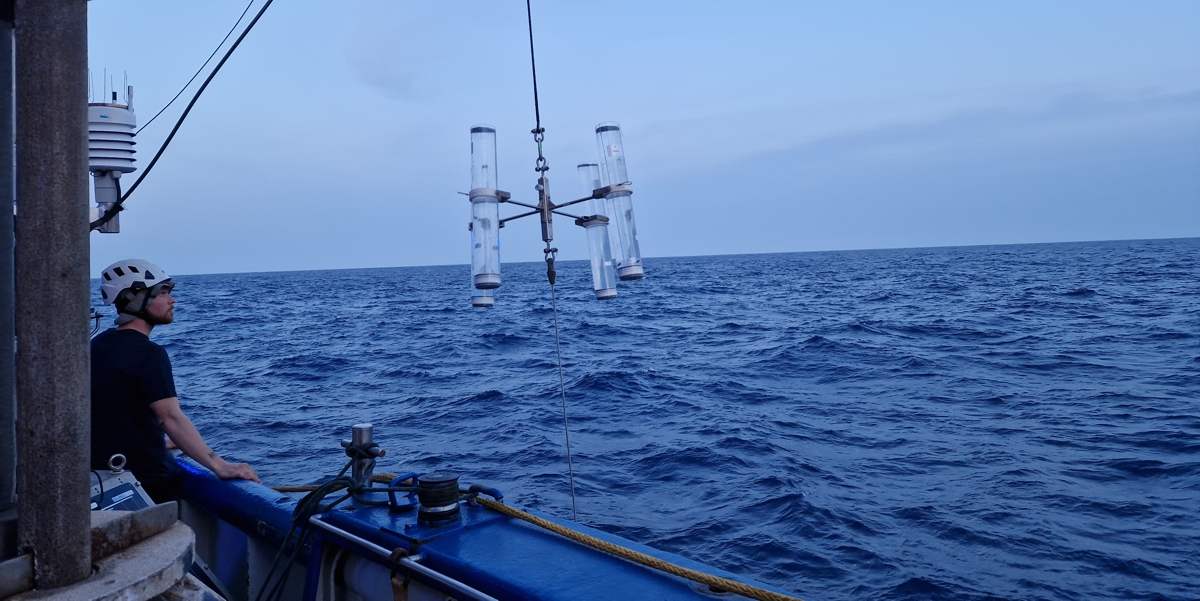
8 March - general introduction to DUST2023
Although the ship is dry (no alcohol to be had), the bar is still the meeting place. Here, games are played, movies watched and also: (scientific) presentations given. The "sciencentertainment" gatherings are started with a general introduction of each and everyone and a quick introduction into the aims of this cruise. The next few days will be very busy but there will also be some evenings where we will be on transit / have less work to do. During such nights we grab the opportunity to learn from/about each other.
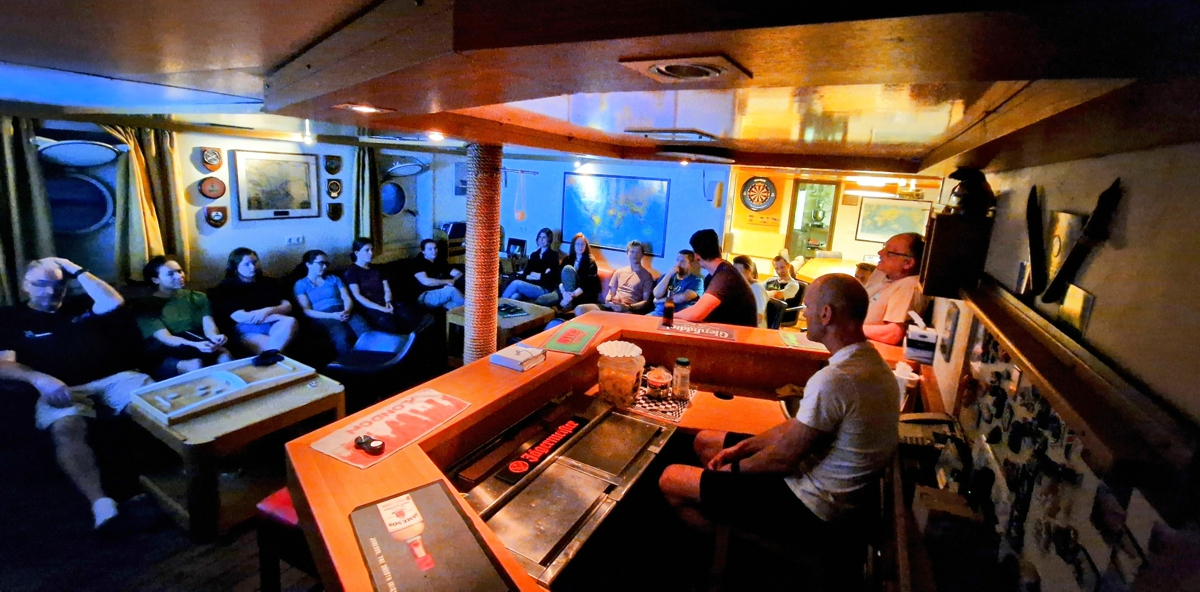
8 March - RV Pelagia, the little blue ship
During our first transit to the working area just south of the Cape Verde EEZ (200 miles zone) we carry out a test of the CTD (equipment to measure ocean properties like temperature, salinity, oxygen content, chlorophyll concentrations etc.), which goes down to the sea floor, some 5,000m below us. This also provides a nice chance to try out the drone and see the ship in perspective to the vast ocean we are sailing in.
7 March - moonstruck
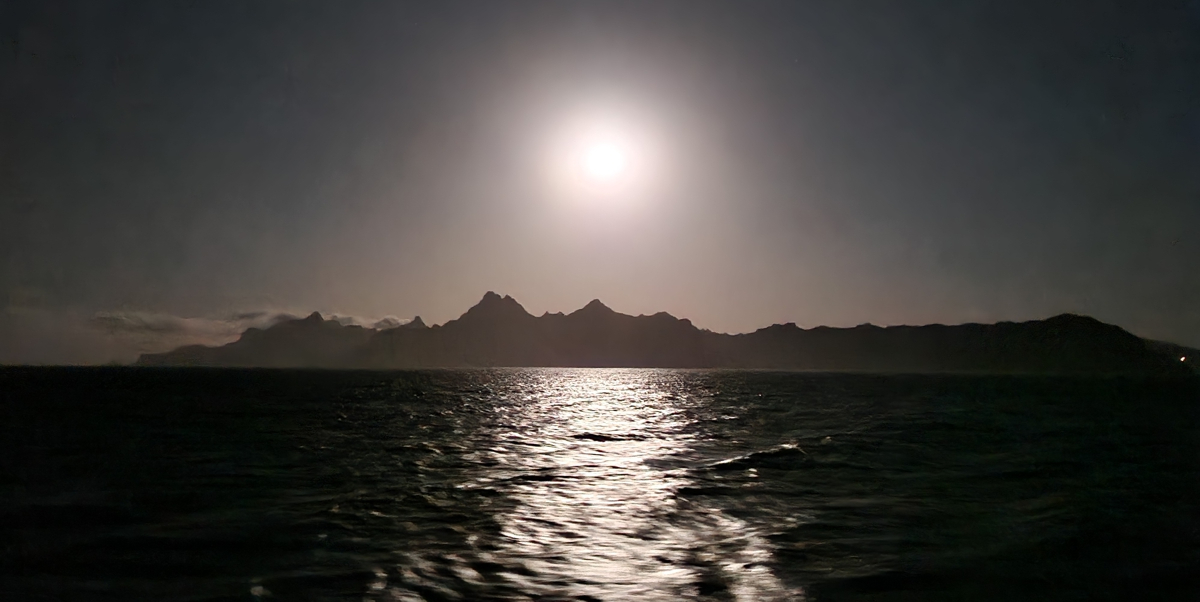
7 March - leaving Mindelo
After dinner we are leaving the port of Mindelo, initially sailing West towards the sunset. We wave a last good-bye to the sleeping man and set sail towards the first station, which is about 1½ days southeast of the island of Mindelo.
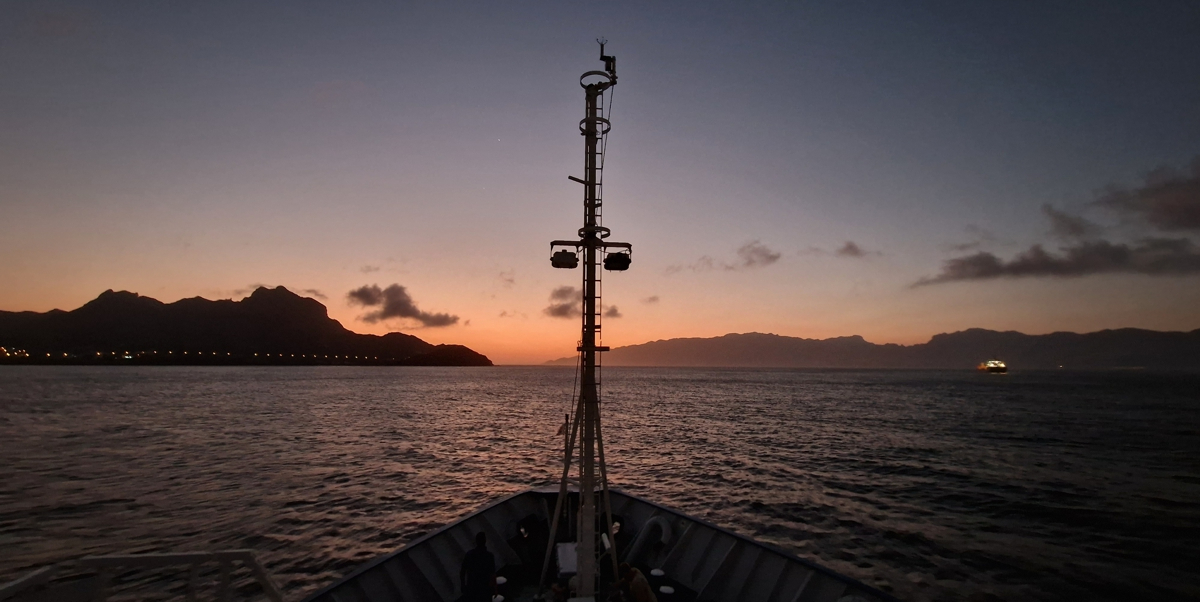
7 March - almost ready to go
Here you see the dust team of the expedition; Blanda, Anouk, Bob, Jan-DIrk, Jan-Berend and Catarina. Almost all stuff has been loaded on the ship and we are ready to go and chase some Saharan dust!
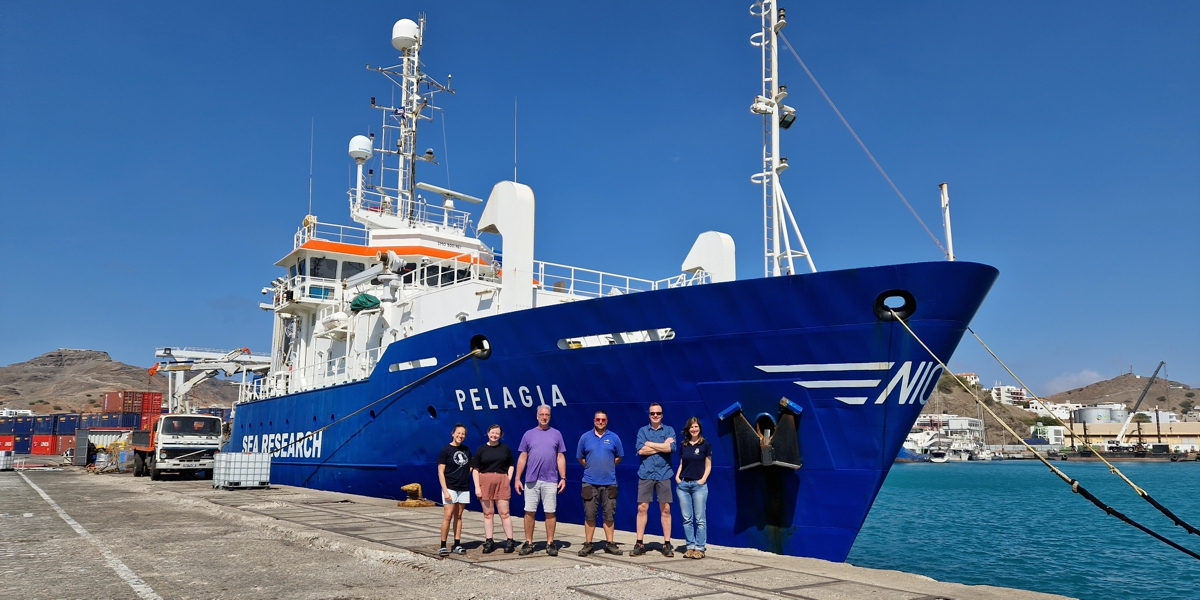
6 March - loading the ship
Today is a busy day of re-arranging equipment and containers on the ship. Two containers were sent to Mindelo with our equipment and two containers will be sent back home with materials from the previous cruise(s). Fortunately, NIOZ technician Jan Dirk is keeping the overview and everybody is keen to help.
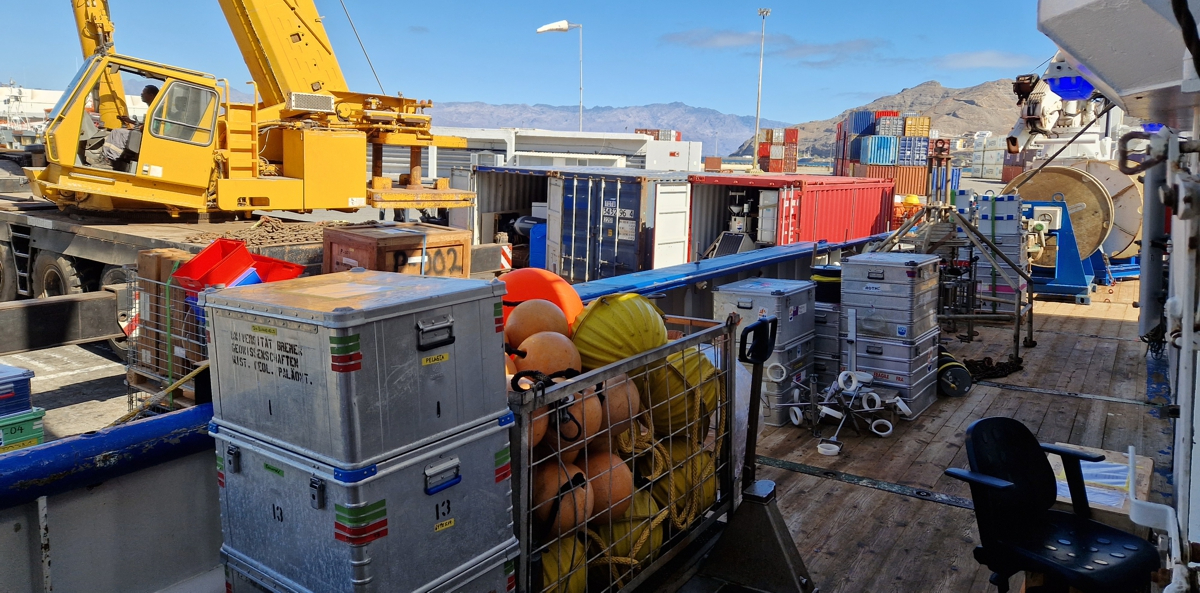
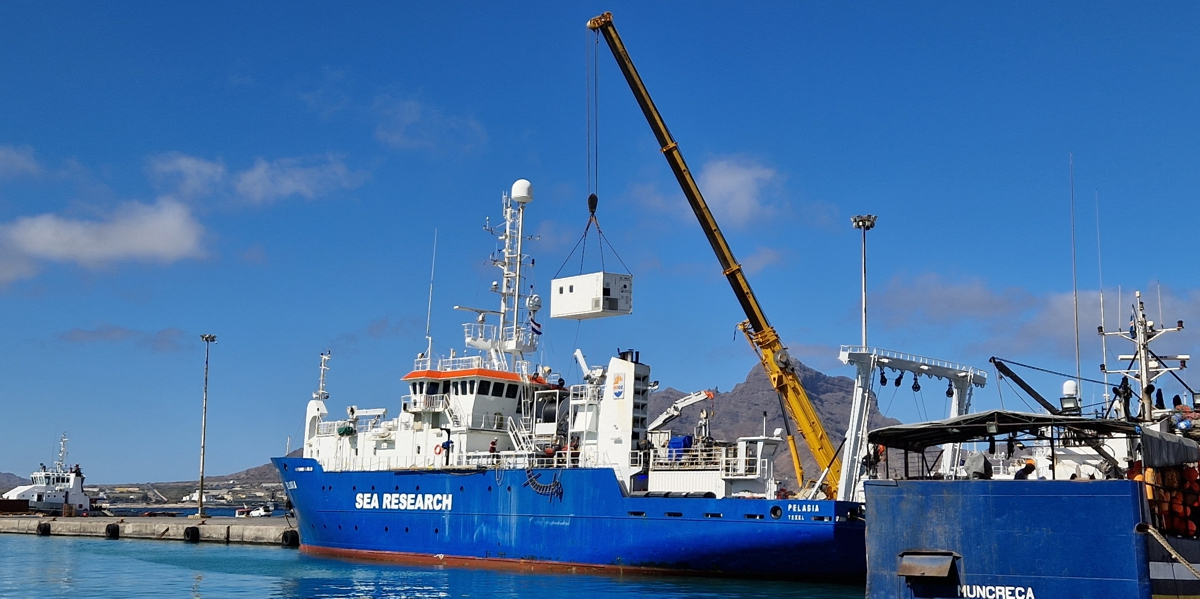
5 March - a red sunset
The sunset colours the skies nicely red, and we look forward to studying the Saharan dust that is responsible for this spectacle.
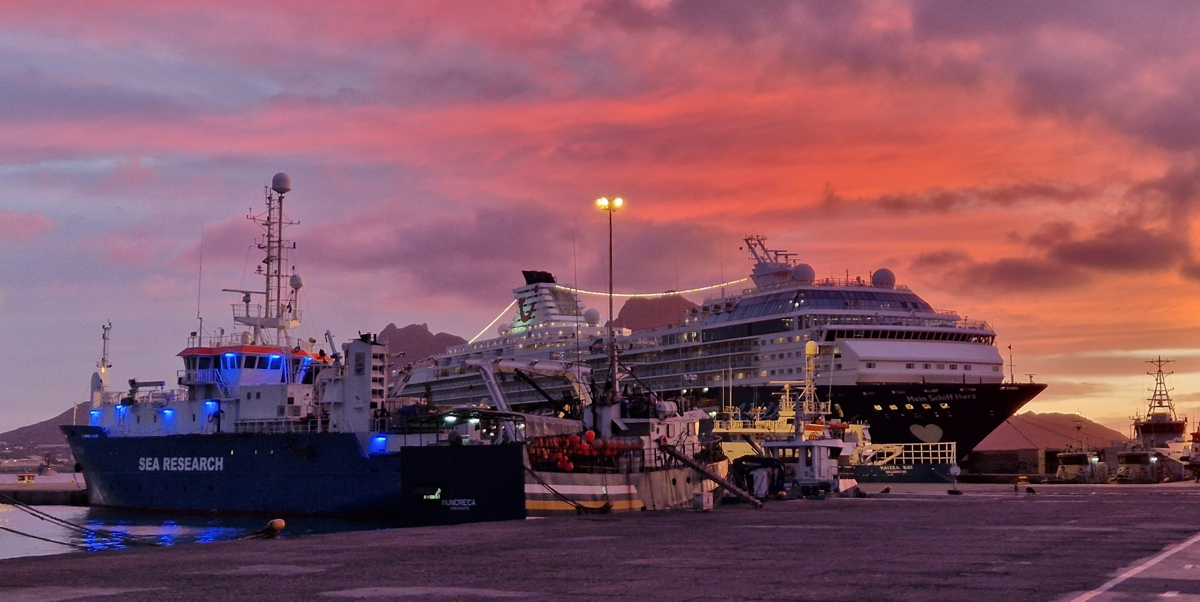
5 March - RV Pelagia docked in the harbour of Mindelo
The scientists from the previous cruise have left the ship and --although we are all very keen to step on board-- we give the ship's crew some time to prepare for the arrival of the next bunch of enthusiastic scientists. In the course of the afternoon the agent picks us all up at the hotels we were staying at and brings us to the ship. Compared to the cruise ship in the back RV Pelagia is pretty small but none of us is tempted to exchange our 'cruise' with the one offered on that big tourist ship.
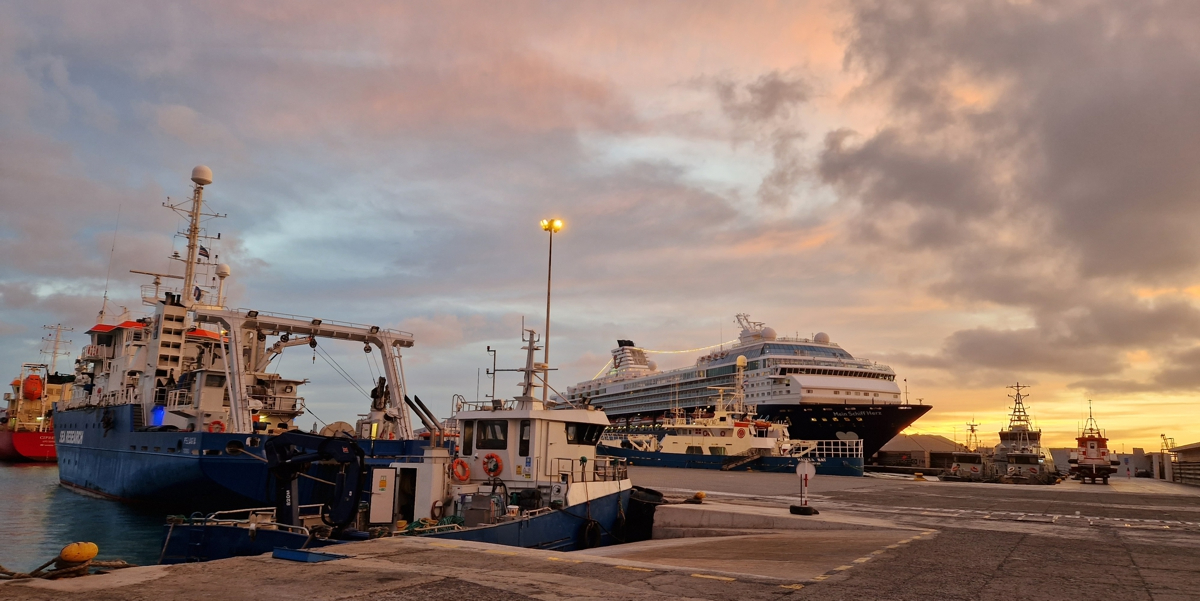
4 March - RV Pelagia and the sleeping man
Here you see how RV Pelagia approaches the island of Sao Vicente where she will port in the harbour of Mindelo. On the left of this photo you see the mountain which is locally known as "the sleeping man"; with a little imagination one can discern (L2R) a chin, mount, nose and forehead.
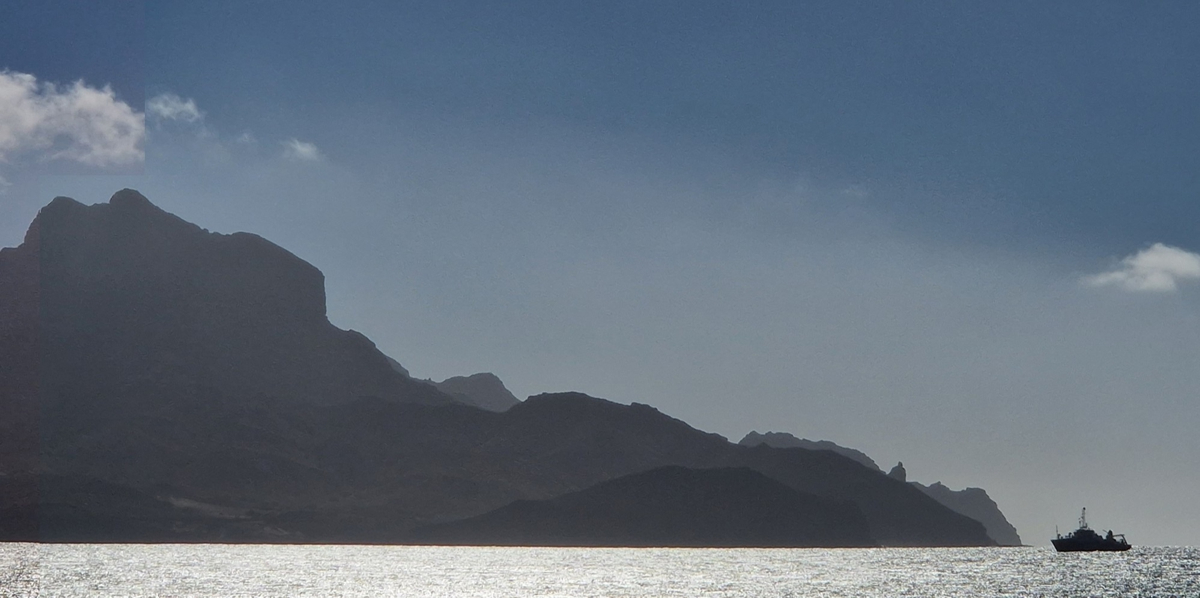
4 March - harvesting time
The OSCM colleagues kindly gave us access to their facilities on this Saturday so we use this opportunity to disassemble the buoy and put the tower with all the samples and data inside the big workshop. We enjoy the fact that we have so much space and that the floor is not moving; conditions under which we are otherwise working onboard the ship.
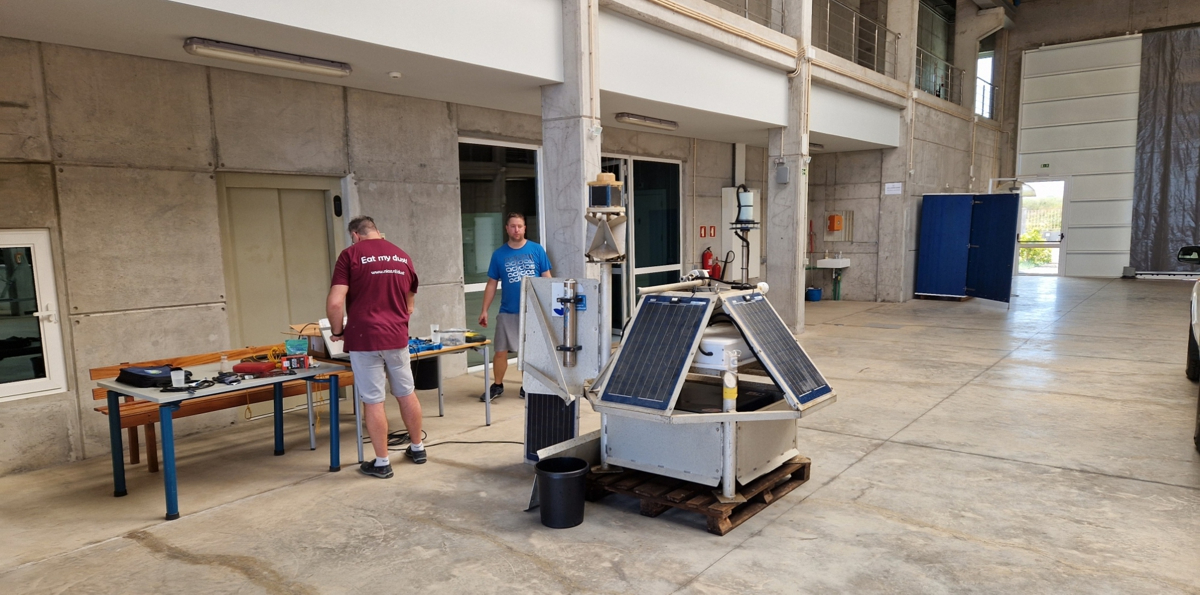
4 March - a buoy's view
Since November 2022, buoy Carmen had been standing at the OSCM (see blog). At least she had a very nice view over Mindelo harbour.....
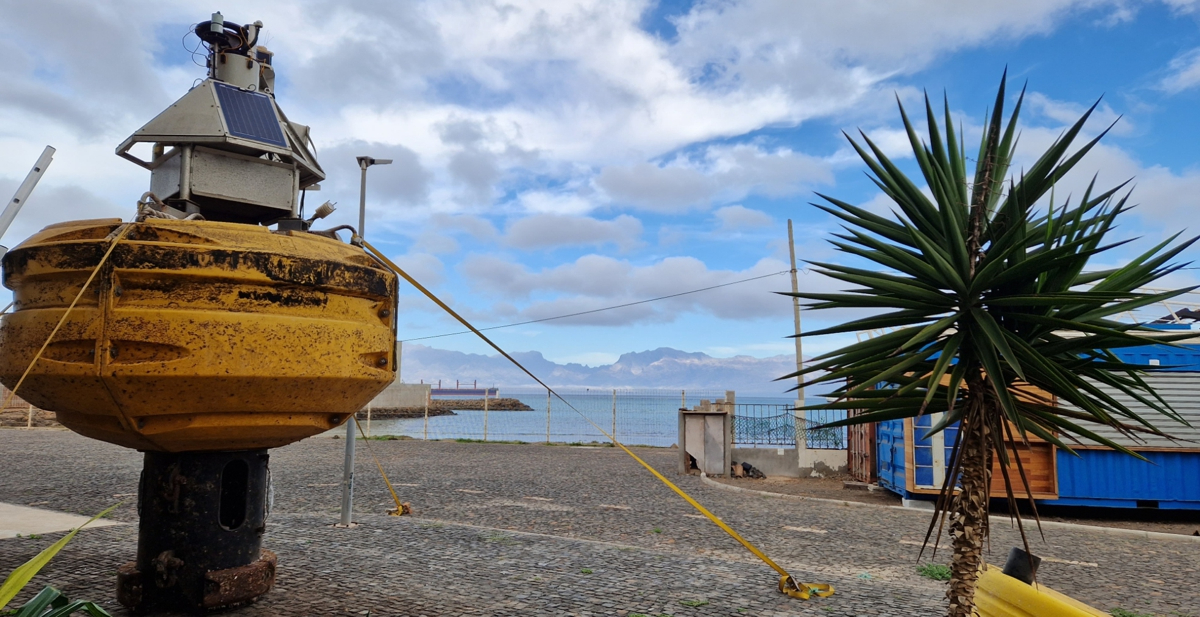
4 March - harvesting buoy Carmen
All the samples (dust filtered from the atmosphere and dust collected with the new wet-dust collector) and data (atmospheric meteorological data and sea-surface data like temperature and salinity) are still stored on the buoy and we are very keen to 'harvest' these data. The OSCM staff kindly gave us a key to their facilities so that we can get to work on this Saturday.
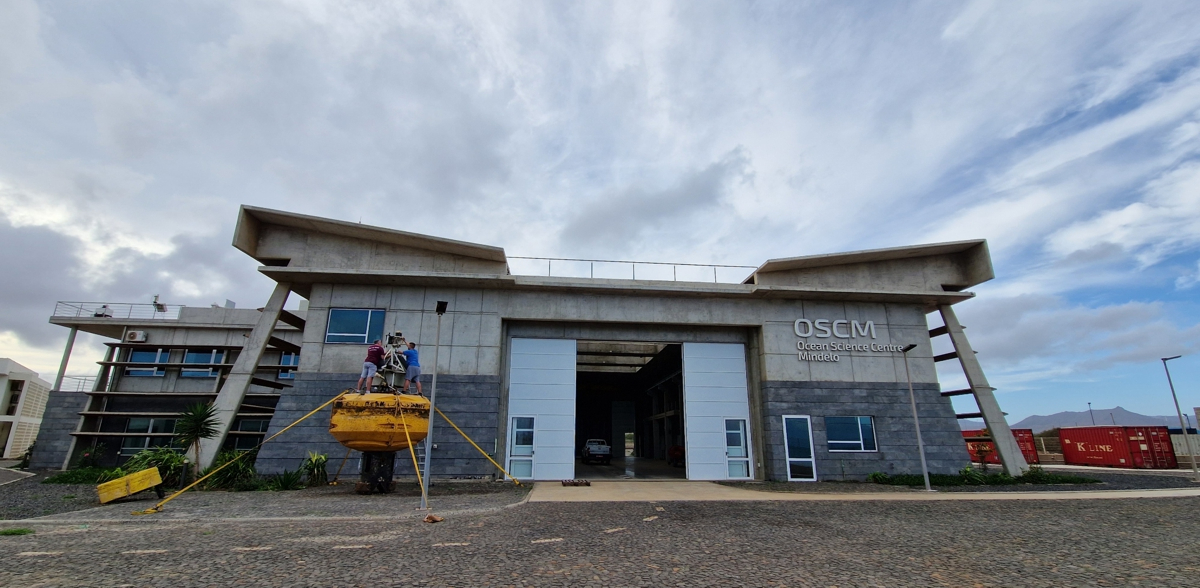
3 March - Mindelo Marina
After having left chilly northwestern Europe, we enjoy being in the subtropics! We have time to stroll around Mindelo Marina which is a last stop for many sail ships whose crews gather and meet up before crossing the Atlantic towards Brazil. We even think there might be some dust in the sky....
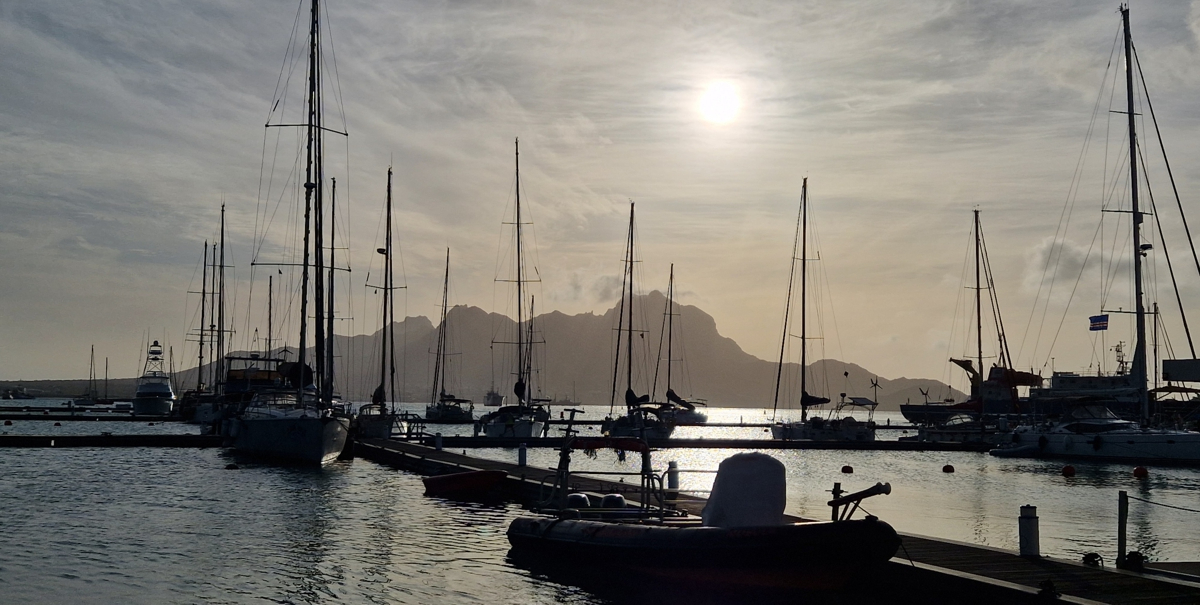
3 March - reuniting with buoy Carmen
After having dropped our suitcases at the hotel, we proceed to the OSCM - Ocean Sciences Center Mindelo where run-away buoy Carmen had kindly been brought by colleagues onboard RRS Discovery in November 2022 (see blog). We cannot help notice that Carmen is even more covered with dust then when we normally meet her at sea.....
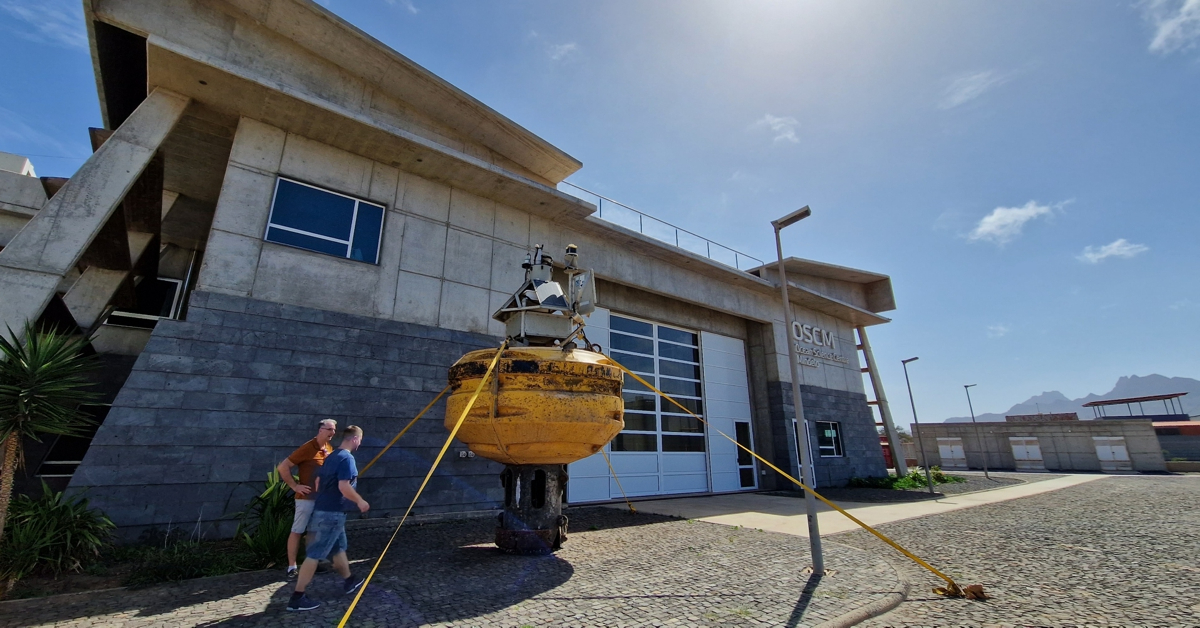
3 March - touchdown in Mindelo, Sao Vicente
The first three participants (Jan-Dirk, Bob and Jan-Berend) have landed on Sao Vicente where the airport is named after the famous Cape Verdian singer Cesaria Evora.
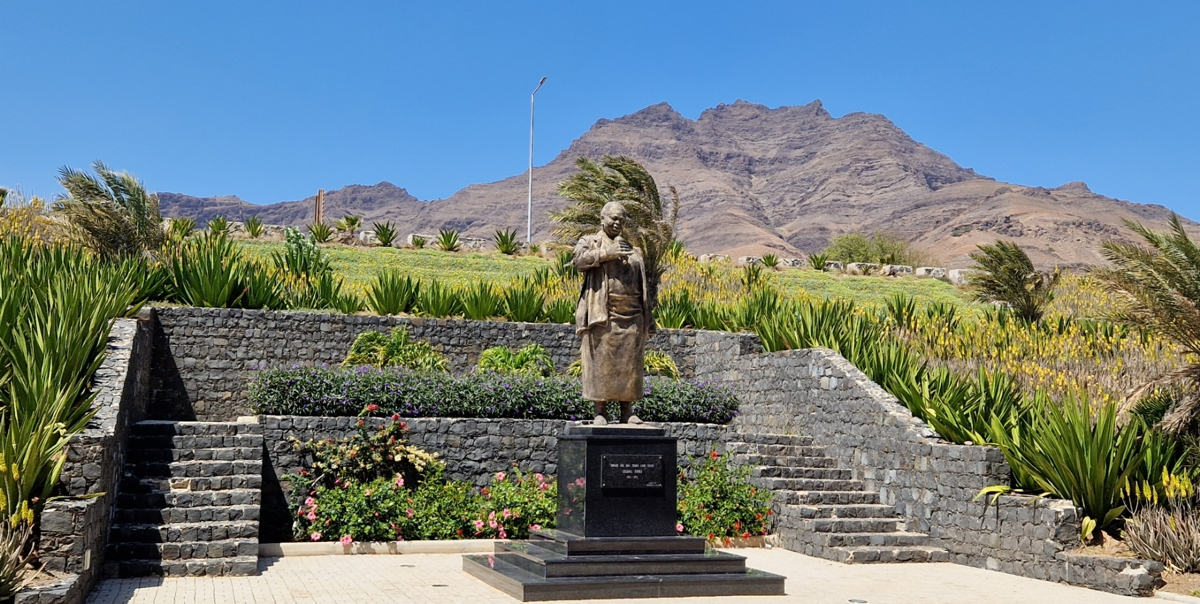
26 January - Safety at Sea training
Every person joining an expedition onboard RV Pelagia is required to have received a so-called PST - Personal Safety Training, also known as S@S - Safety at Sea. Here one learns a whole set of survival skills, for a large part under very realistic conditions: with a survival suit in the water. The training also includes how to draw attention using an emergency flare. We hope we never have to use these new skills for real....
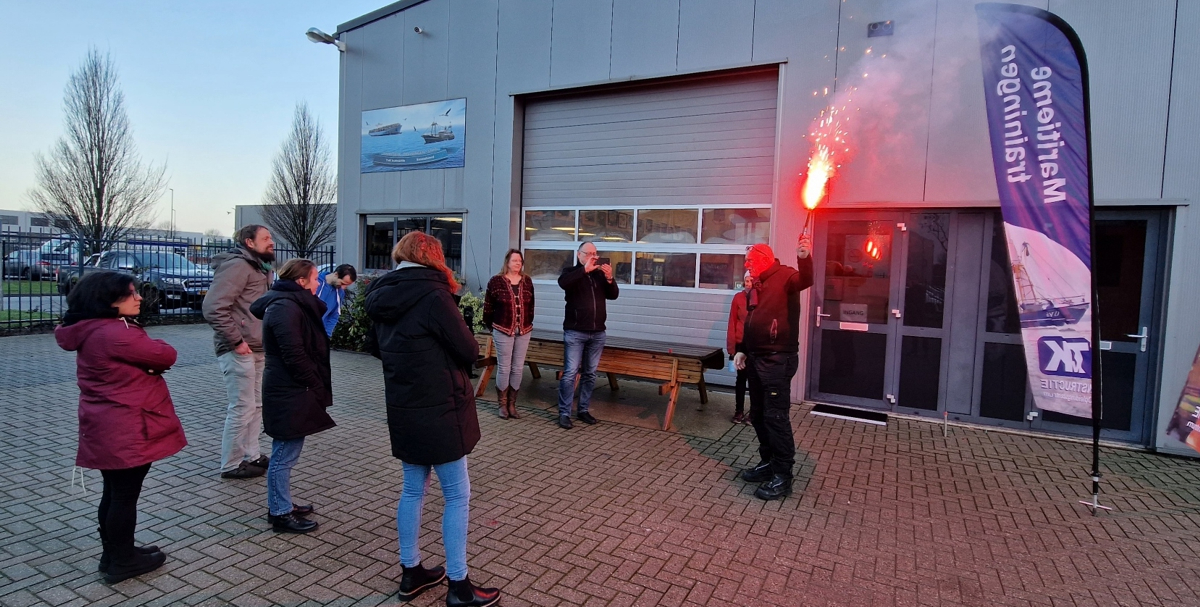
21 January - Packing puzzle complete
Here you see how NIOZ technician Jan Dirk is relieved that he managed to store everything in the container once more. It is more than being good at tetris; everything needs to be packed as well as secured tightly in order to survive the voyage by containership.
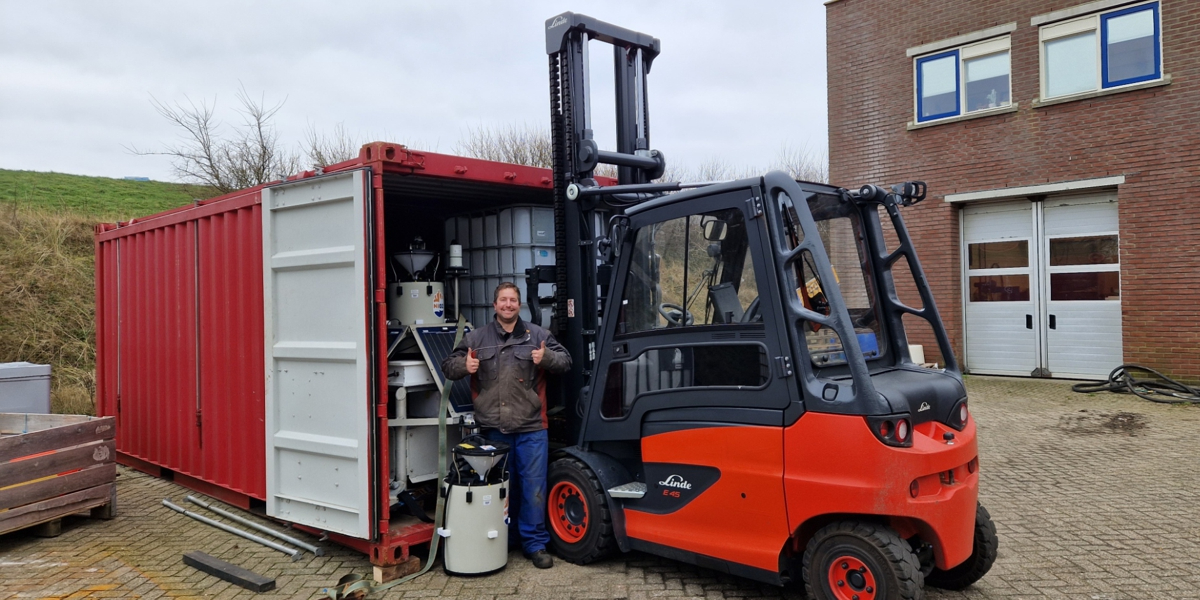
20 January - Shipping the equipment
Next to the equipment that we use in the labs onboard RV Pelagia, other 'consumables' such as steel cables, mooring lines and anchor weights need to be transported to the ship. Here you see how NIOZ technicians Barry and Jan Dirk are hoisting these heavy materials into the transport container. The open top makes loading the heavy parts a whole lot easier.
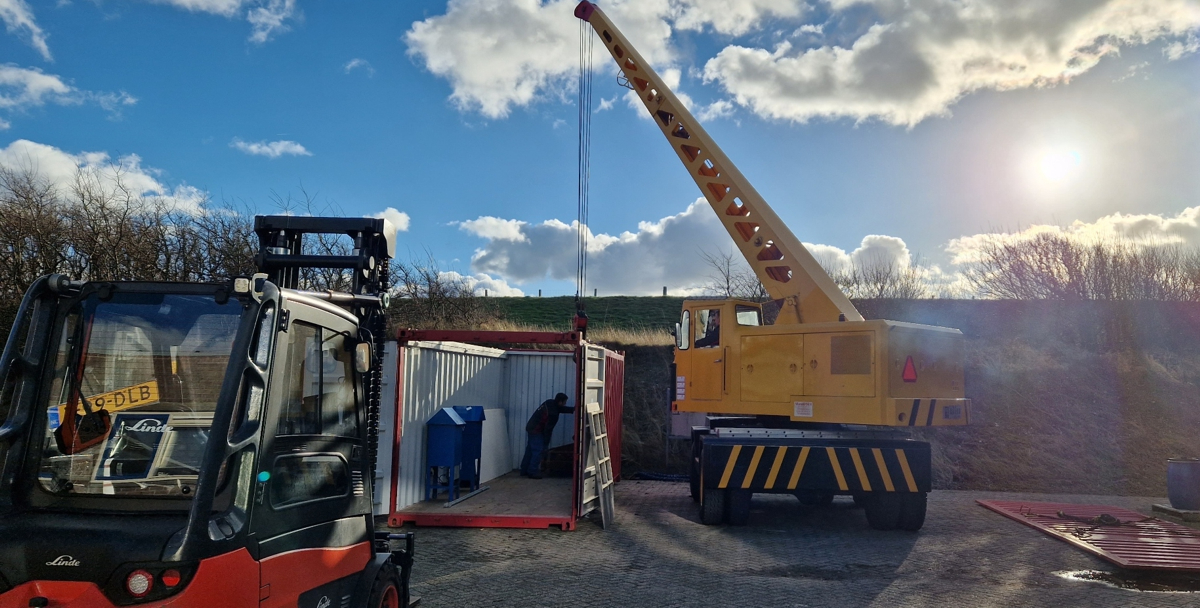
18 January - Preparing new dust filters
Preparations for the cruise also include new filters that shall be installed on the dust-collecting buoys. Anything that can be done in the lab at home (instead of on a moving ship), especially those preparations that require 'mm-work' is prepared and packed for transport to the ship. Here you see how the filters are pristine white, we hope that after a year at sea they show the typical orange colour of Saharan dust!
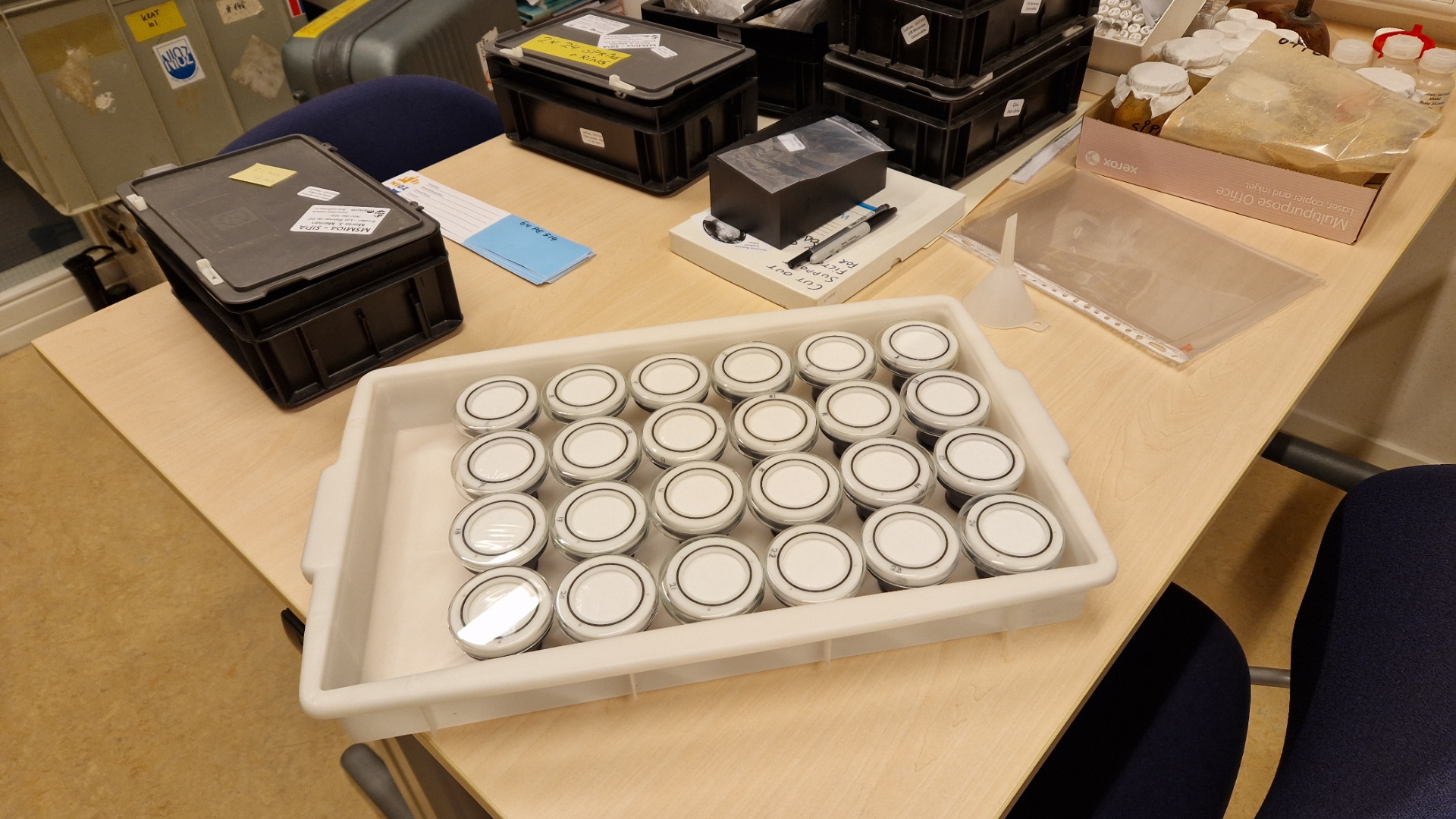
16 January - No shops at sea
Prior to the expedition, we need to think carefully and plan the shipment of our equipment and laboratory materials that we will need at the ship. These materials will be sent by container to Mindelo and since there are no shops at sea, we need to think carefully and plan ahead very well.
